Creating an attractive front yard that combines rocks and mulch opens up endless possibilities for transforming your home's entrance into a stunning landscape that catches every eye. These two versatile materials work together beautifully to create low-maintenance outdoor spaces that thrive in various climates while offering both practical benefits and visual appeal. Rocks provide structure, drainage, and year-round interest, while mulch helps retain soil moisture, suppresses weeds, and adds rich texture to planting areas. The combination allows homeowners to design everything from modern geometric layouts to natural cottage-style gardens that require minimal upkeep compared to traditional grass lawns. Whether you're dealing with challenging soil conditions, water restrictions, or simply want to reduce weekend maintenance tasks, rocks and mulch offer sustainable solutions that enhance curb appeal. From drought-tolerant xeriscapes featuring native plants to colorful perennial borders accented with decorative stones, these materials adapt to countless design styles and regional preferences. The versatility of rocks and mulch means you can create spaces that serve multiple functions while maintaining aesthetic appeal throughout all seasons.
1. Drought-Tolerant Rock Garden Oasis
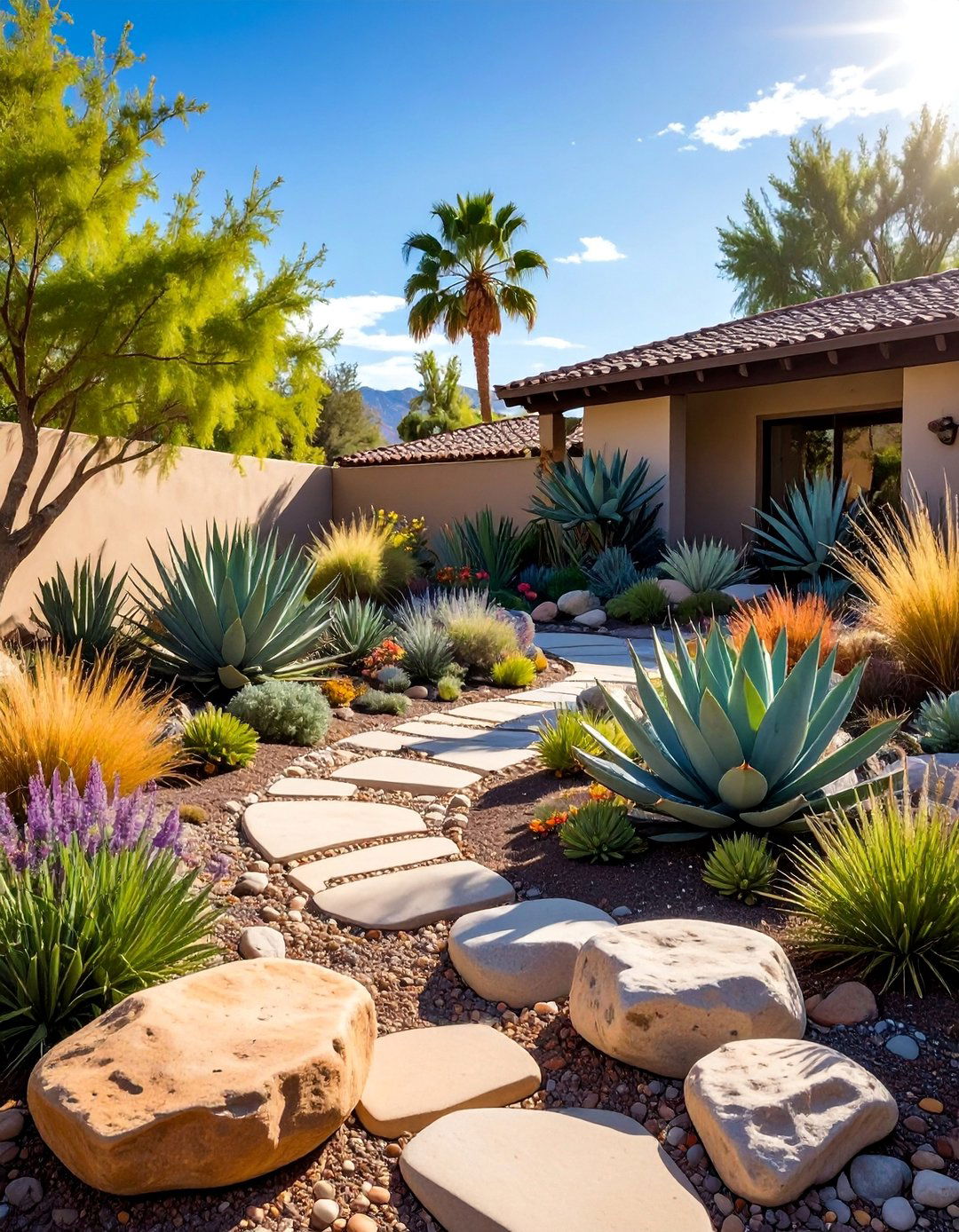
Transform your front yard into a water-wise sanctuary that thrives during dry spells while maintaining year-round beauty. This design combines various sizes of decorative rocks with drought-resistant plants like sedums, agave, and ornamental grasses, creating a landscape that requires minimal irrigation once established. Layer different stone textures from fine gravel to medium river rocks, then add strategic plantings of native species that naturally adapt to your local climate conditions. The mulch between plantings helps retain precious moisture while the rocks provide excellent drainage, preventing root rot during occasional heavy rains. What could be better than a garden that becomes more beautiful with less water? This approach not only reduces utility bills but also supports local ecosystems by using indigenous plants that provide habitat for beneficial insects and birds.
2. Modern Geometric Mulch Beds
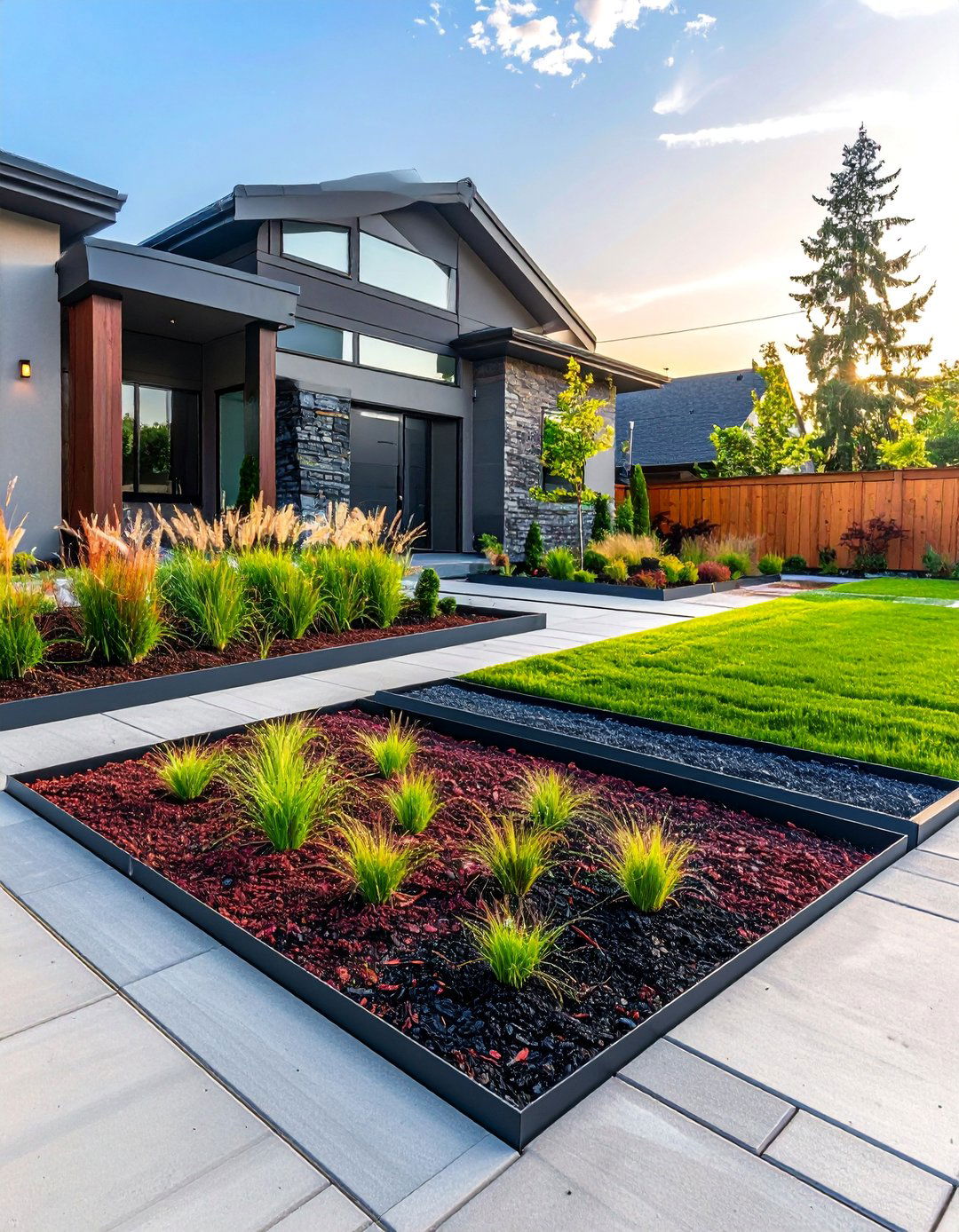
Create striking visual impact through clean lines and bold geometric shapes that define contemporary front yard design. Use edging materials like steel or concrete to form precise rectangular, circular, or triangular planting beds filled with contrasting colored mulch for dramatic effect. Plant ornamental grasses or architectural perennials within these defined spaces to soften the hard edges while maintaining the structured appearance. The geometric layout provides organization to your landscape while the mulch reduces maintenance needs and creates stunning color contrast against surrounding hardscape elements. How can simple shapes transform an ordinary yard into a sophisticated outdoor gallery? The answer lies in thoughtful placement and material selection that creates rhythm and movement throughout your front entrance area, making visitors pause to appreciate the artful design.
3. Native Plant Prairie Garden
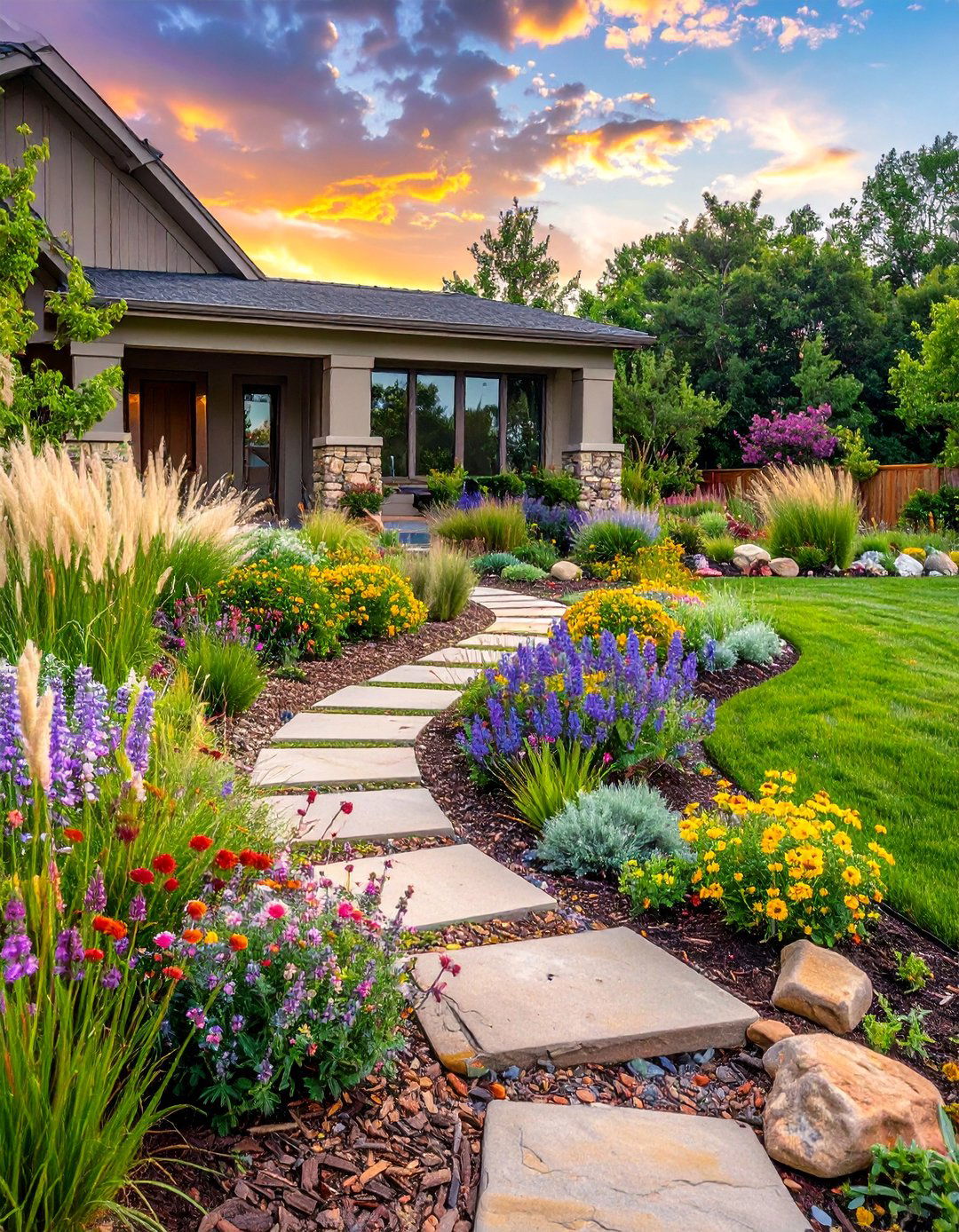
Embrace your region's natural beauty by creating a front yard prairie that celebrates local flora while requiring minimal maintenance and resources. Combine native wildflowers, grasses, and shrubs with organic mulch pathways that wind through naturalized planting areas, mimicking the patterns found in undisturbed landscapes. Use local stone as accent features and borders to define different zones within the prairie while allowing plants to spread and self-seed naturally over time. This approach supports biodiversity, provides food and shelter for local wildlife, and creates a dynamic landscape that changes throughout seasons. Why settle for exotic plants that struggle in your climate when native species offer superior performance and ecological benefits? The prairie garden connects your home to its natural surroundings while demonstrating environmental stewardship through thoughtful plant selection and sustainable design practices.
4. Zen Meditation Rock Garden
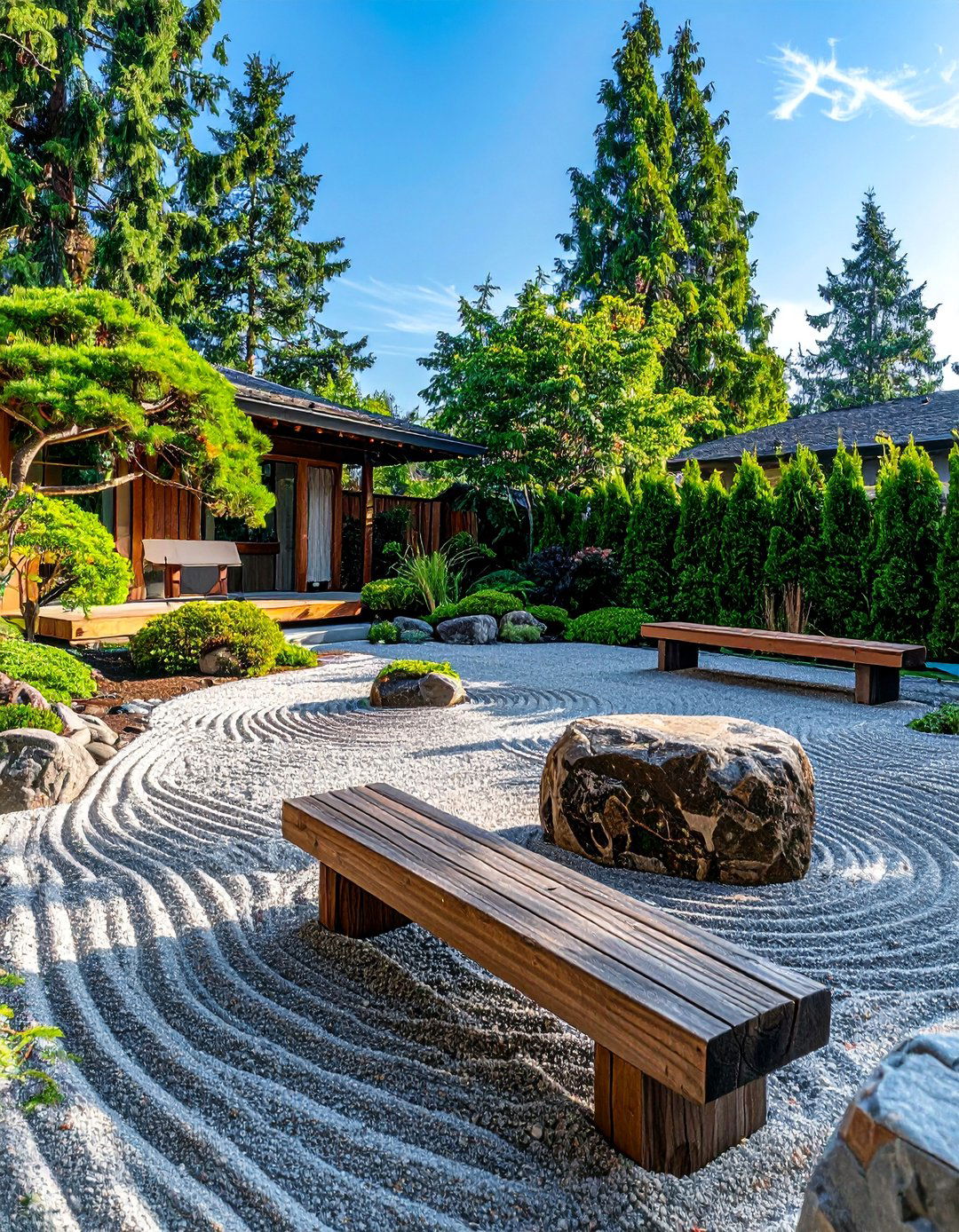
Design a peaceful retreat that promotes tranquility and mindfulness right at your front entrance, using carefully arranged stones and minimal plantings to create contemplative spaces. Rake fine gravel into flowing patterns around larger boulders, add simple wooden benches for quiet reflection, and incorporate evergreen plants like dwarf conifers or bamboo for year-round structure. The intentional placement of each element follows principles of balance and harmony, creating visual calm that soothes both residents and visitors. Strategic lighting can extend the garden's usability into evening hours, while the low-maintenance nature means more time for actual meditation rather than garden chores. Have you considered how your front yard could become a daily source of peace and renewal? This design approach transforms functional landscape into meaningful outdoor sanctuary that nurtures mental wellbeing.
5. Colorful Perennial Border Design

Establish vibrant seasonal displays that provide continuous blooms throughout growing seasons while incorporating rocks and mulch for structure and soil health. Layer plants by height and bloom time, using taller perennials like coneflowers and black-eyed Susans in back, medium-height salvias and catmint in middle sections, and low-growing sedums along borders. Decorative stone pathways wind through planting areas, while organic mulch around plants conserves moisture and suppresses weeds between maintenance visits. The rock elements provide permanent structure during winter months when perennials die back, ensuring year-round visual interest. What impact would four seasons of changing colors have on your daily mood and neighborhood's character? This design celebrates nature's cycles while creating a dynamic landscape that offers new discoveries throughout each growing season.
6. Water-Smart Rain Garden
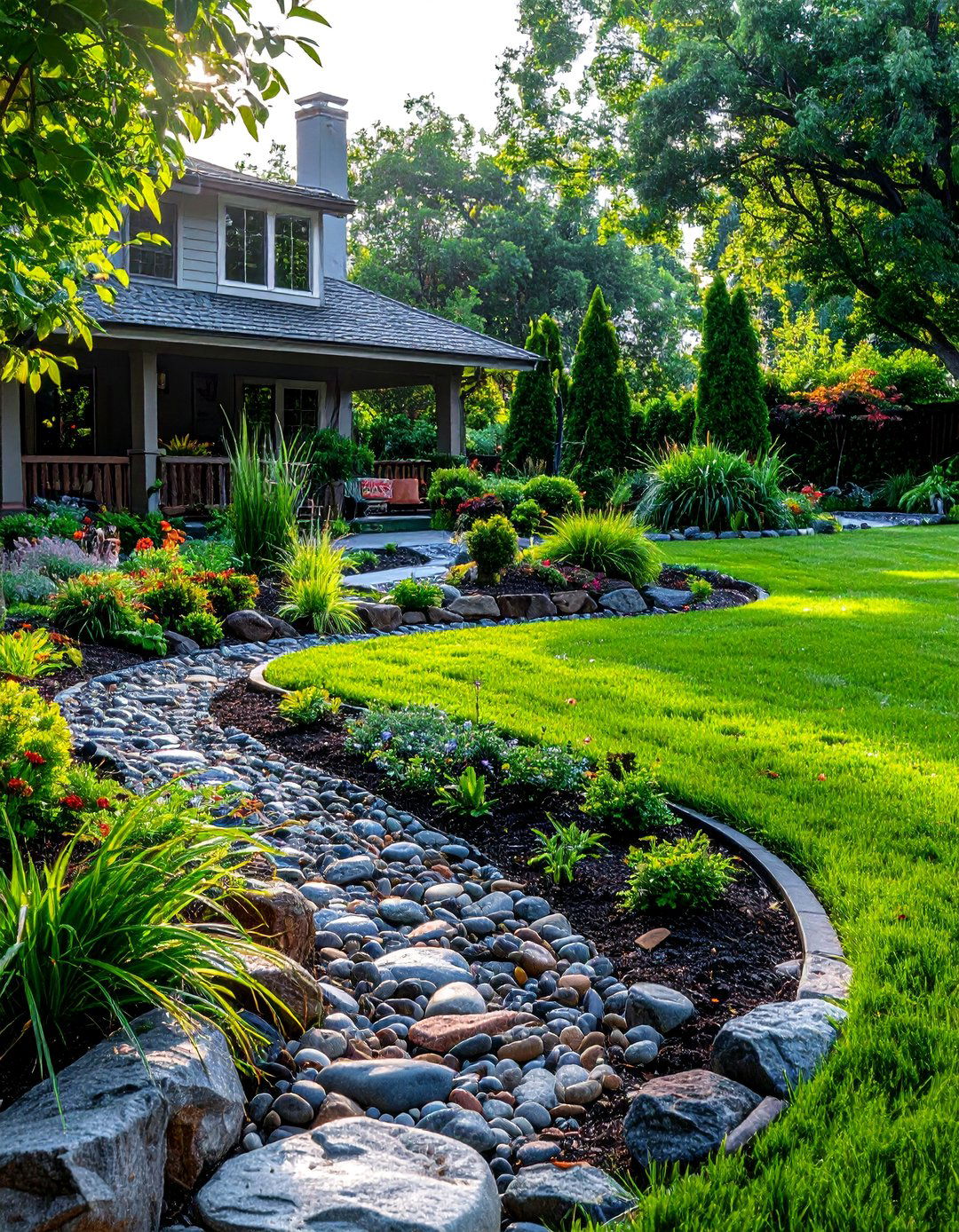
Channel rainwater runoff into attractive landscaped depressions that prevent erosion while creating unique planting opportunities for moisture-loving native species. Design gentle slopes that direct water from roofs, driveways, and walkways into planted basins lined with decorative rocks and filled with water-tolerant perennials like iris, cardinal flower, and switchgrass. The mulched planting areas help filter runoff while providing habitat for beneficial insects and birds attracted to the consistent moisture levels. During dry periods, the rain garden becomes a striking focal point with interesting textures and architectural plant forms. How much water currently runs off your property that could instead nourish a beautiful garden feature? This sustainable approach manages stormwater naturally while creating habitat and reducing strain on municipal drainage systems.
7. Mediterranean Herb Garden Retreat
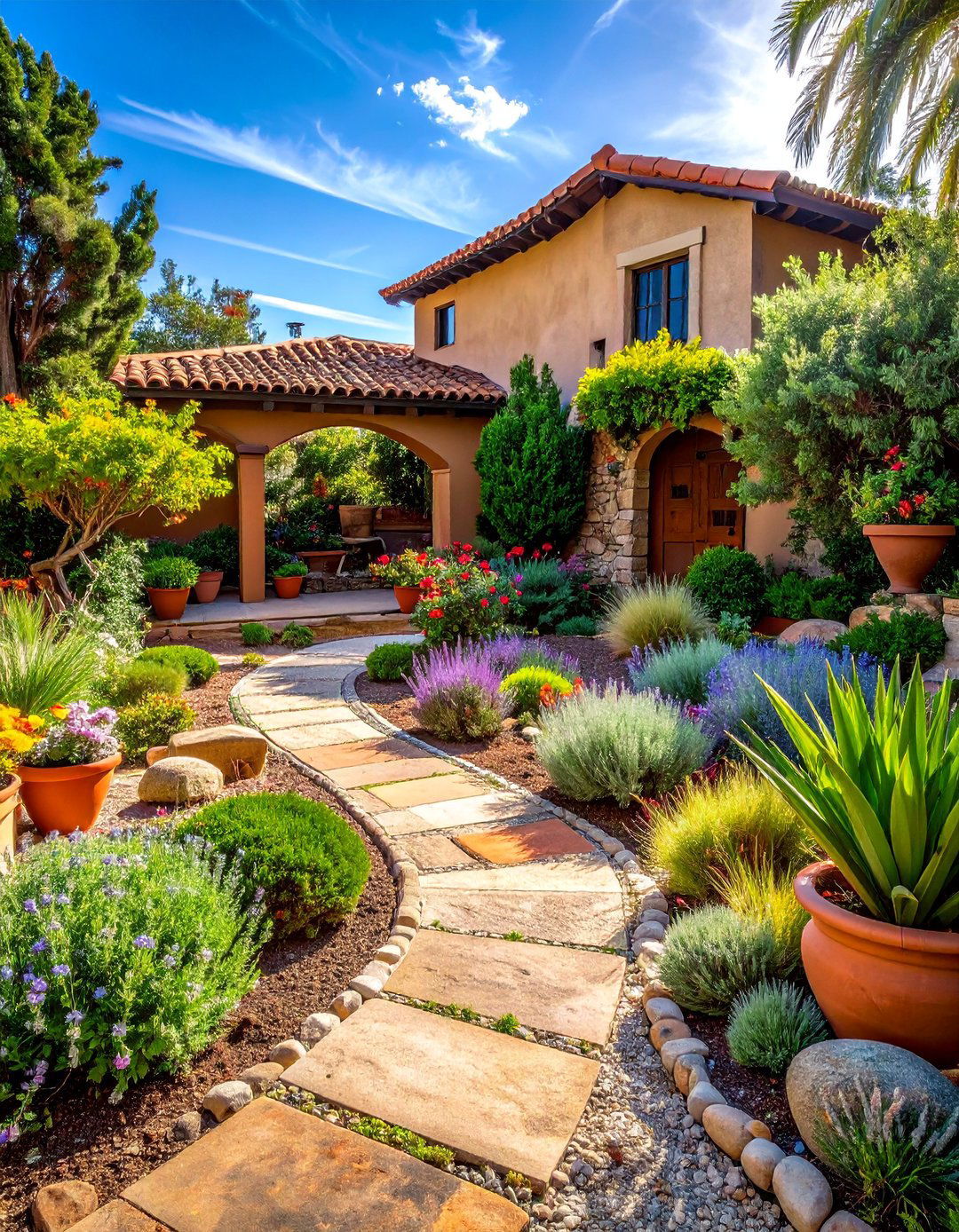
Create an aromatic and functional landscape inspired by coastal Mediterranean regions, featuring drought-tolerant herbs, gravel pathways, and terra cotta accents that thrive in sunny locations. Plant culinary favorites like rosemary, thyme, oregano, and lavender among decorative stones, using organic mulch to define planting areas and retain soil moisture. The combination of useful plants and attractive hardscape creates a garden that appeals to multiple senses while providing fresh ingredients for cooking. Stone walls or raised beds can provide microclimates for more tender herbs while creating visual structure throughout the design. Why not combine beauty with practicality in a landscape that feeds both body and soul? This approach transforms functional gardening into an attractive front yard feature that connects daily life with landscape design.
8. Cottage Garden Rock Pathways

Develop charming informal landscapes that combine the romance of traditional cottage gardens with practical stone walkways and modern mulching techniques. Allow flowering perennials like hollyhocks, delphiniums, and foxgloves to spill over natural stone paths while organic mulch keeps soil healthy and weeds controlled. The seemingly casual arrangement actually requires careful planning to ensure proper plant spacing and seasonal succession of blooms throughout growing seasons. Decorative rocks provide structure and drainage in areas where softer plants might struggle, creating microclimates for diverse plant communities. What stories might your garden tell through its informal beauty and welcoming pathways? This design style celebrates abundance and natural growth patterns while maintaining accessibility and structure through thoughtful hardscape integration.
9. Succulent Rock Garden Display

Showcase water-storing plants in dramatic arrangements that highlight their unique forms and textures while requiring minimal irrigation and maintenance throughout seasons. Combine various succulent species with complementary rock colors and textures, using fine gravel mulch to provide excellent drainage and create cohesive visual flow. The architectural qualities of succulents create living sculpture that changes subtly through seasons while maintaining strong structural presence year-round. Strategic placement takes advantage of microclimates created by rock thermal mass and drainage patterns, ensuring optimal growing conditions for these specialized plants. How can you transform challenging growing conditions into opportunities for unique garden features? This approach celebrates plants adapted to harsh conditions while creating sophisticated landscape compositions that thrive where traditional plants struggle.
10. Ornamental Grass Meadow
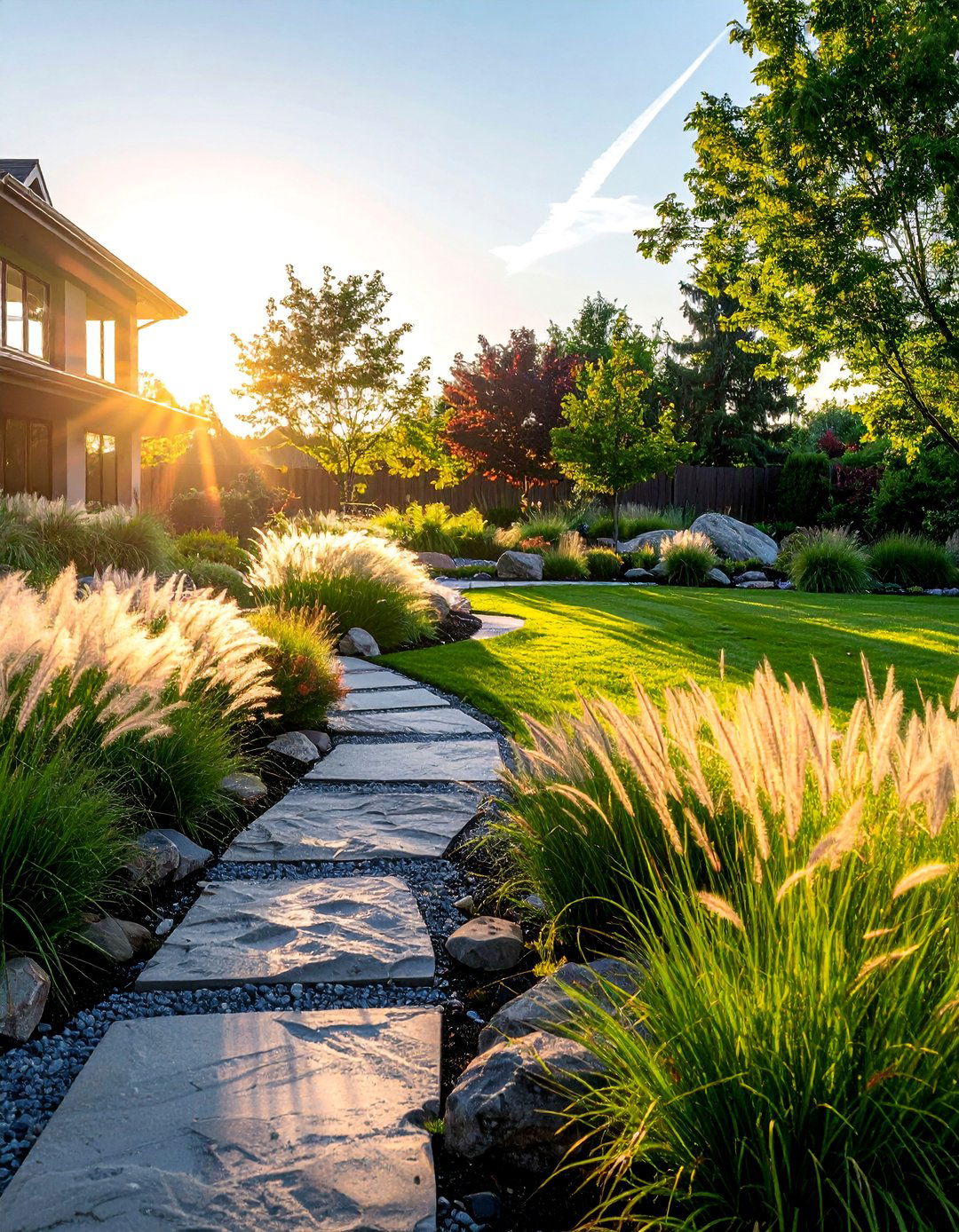
Establish flowing landscapes that capture natural grassland beauty while incorporating stone accents and mulched pathways that provide structure and accessibility throughout seasons. Select ornamental grasses with different heights, textures, and seasonal colors, creating layered compositions that move gracefully in breezes while requiring minimal maintenance once established. Rock outcroppings and gravel pathways provide contrast to soft grass textures while ensuring proper drainage and creating visual anchors during winter months. The naturalistic planting style supports wildlife while offering year-round interest through seed heads and winter structure. What emotions does tall grass swaying in summer breezes evoke in your daily experience? This design connects urban landscapes with natural grassland ecosystems while providing low-maintenance beauty that changes constantly with weather and seasons.
11. Vertical Living Wall Garden

Maximize planting space through innovative vertical growing systems that incorporate rock features and mulched ground level plantings for comprehensive landscape coverage. Install trellises, living walls, or terraced planters that support climbing plants, cascading perennials, and structured shrubs while ground level areas feature complementary mulched beds with decorative stone accents. This approach works particularly well for narrow front yards or properties with limited horizontal space but abundant wall or fence surfaces. The vertical elements create privacy, reduce noise, and provide habitat while ground level plantings complete the landscape composition. How much unused vertical space surrounds your front entrance that could become productive growing area? This design strategy transforms challenging spatial constraints into opportunities for creative and abundant landscape installations.
12. Seasonal Color Rotation Garden
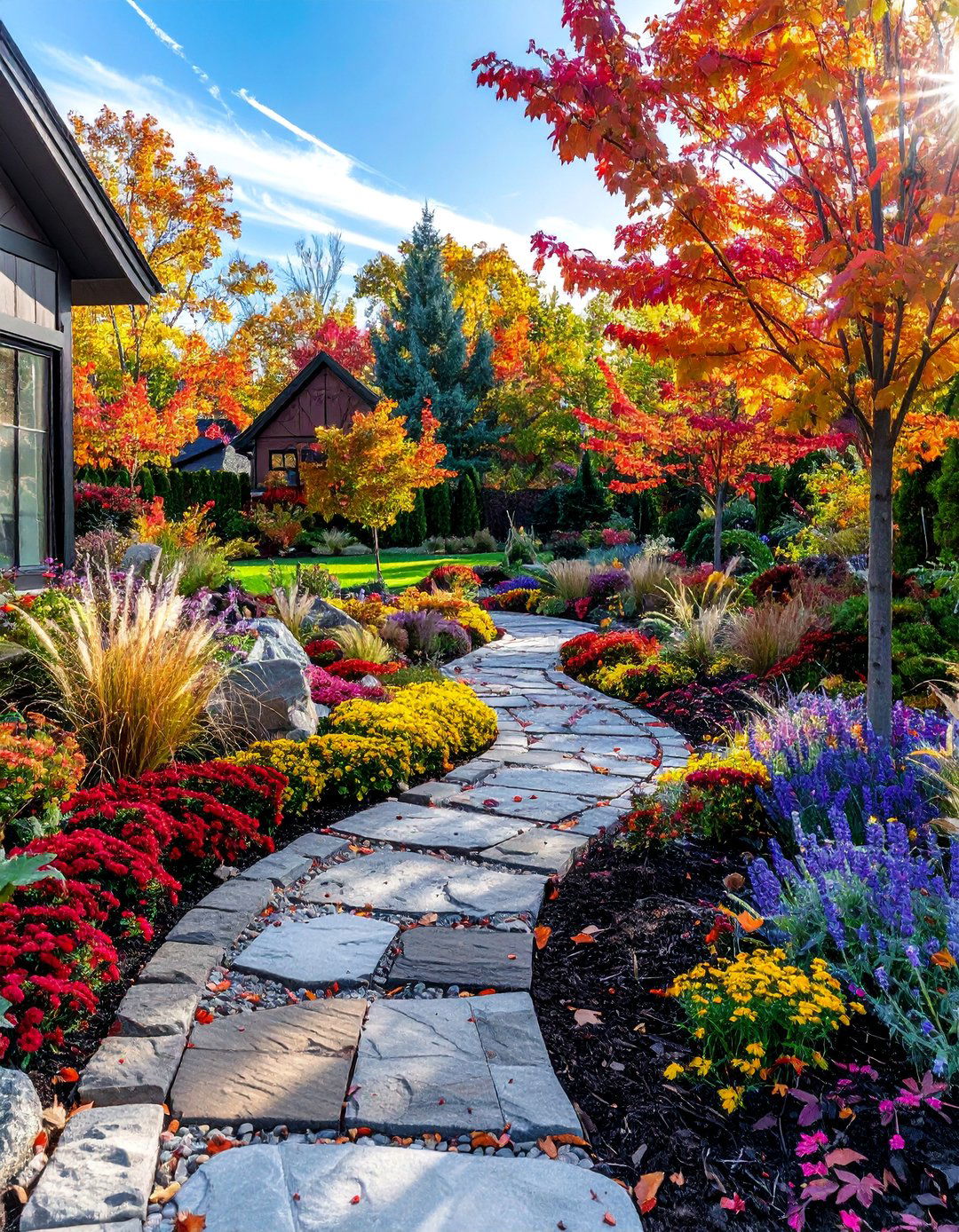
Plan dynamic landscapes that provide changing displays throughout growing seasons while maintaining consistent structure through permanent rock features and well-planned mulching systems. Design planting areas that accommodate seasonal replacements of annuals and bulbs while perennial backbone plants provide reliable structure and foundation plantings. Stone pathways and decorative rock features remain constant while plantings evolve from spring bulbs through summer annuals to fall chrysanthemums and winter evergreens. The mulched areas make plant replacement easier while conserving soil moisture and preventing weed competition during transitions. What if your front yard could reflect each season's unique beauty while maintaining cohesive design throughout the year? This approach celebrates nature's cycles while ensuring continuous visual interest and curb appeal regardless of timing.
13. Raised Bed Vegetable Gardens

Integrate productive growing spaces into attractive front yard designs through elevated planting beds constructed with decorative stone materials and filled with quality soil and mulch systems. Design raised beds that complement home architecture while providing optimal growing conditions for vegetables, herbs, and edible flowers that contribute both beauty and function. The elevated design improves drainage, extends growing seasons, and makes maintenance easier while decorative stone construction adds permanent landscape structure. Pathways between beds use complementary materials like gravel or stepping stones, creating attractive circulation patterns through productive growing areas. Why separate ornamental landscapes from food production when integrated designs can provide both beauty and sustenance? This approach demonstrates how front yards can contribute to household food security while maintaining attractive curb appeal.
14. Fire-Resistant Landscape Design
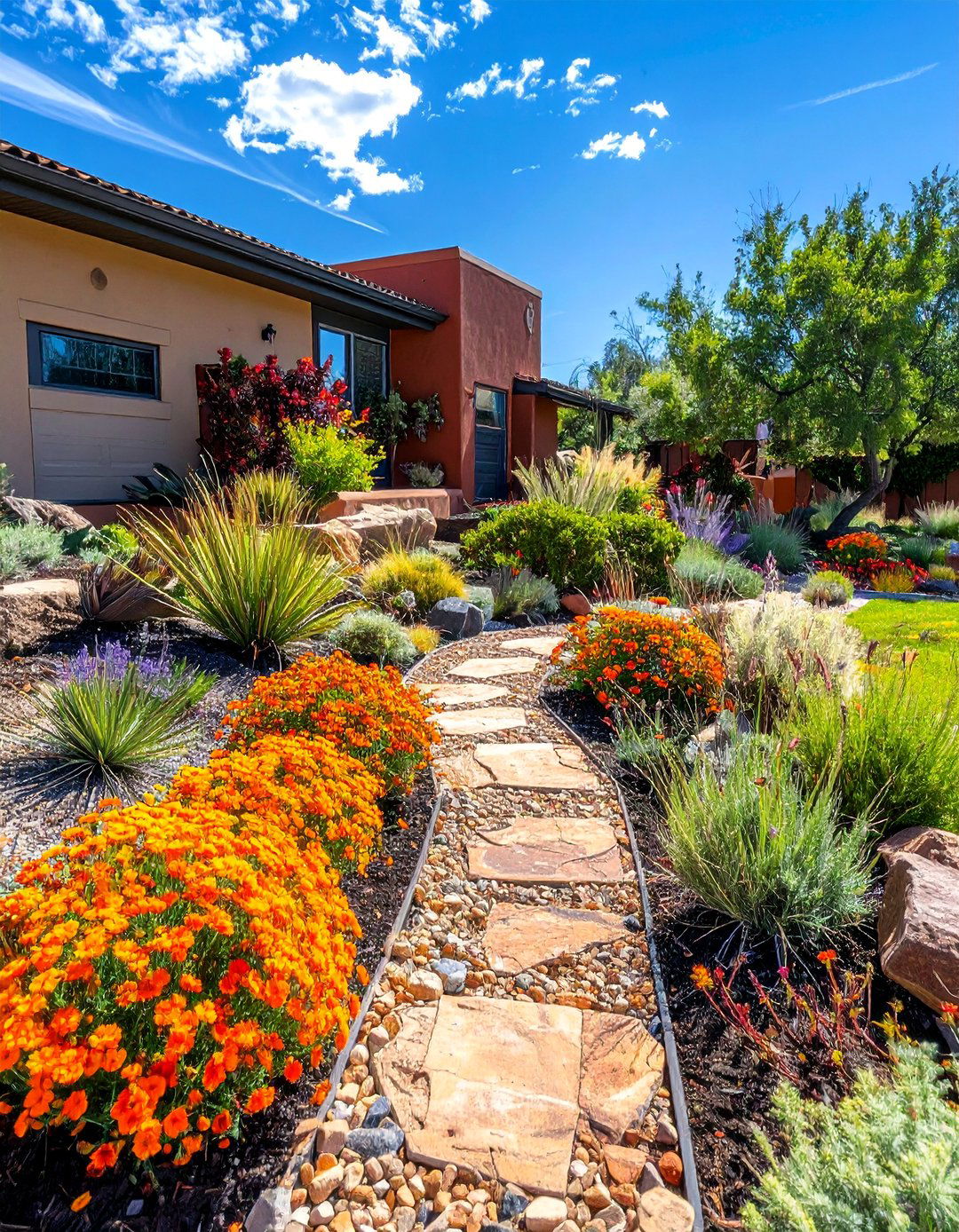
Develop defensible space around homes using fire-resistant plants, mineral mulches, and strategic rock placement that reduces wildfire risk while maintaining attractive landscape compositions. Select drought-tolerant plants with high moisture content and low flammability ratings, spacing them appropriately to prevent fire from jumping between plants during extreme weather conditions. Use rock mulch and gravel pathways to create firebreaks while providing attractive ground cover that won't ignite during ember attacks. The design balances safety requirements with aesthetic goals, creating landscapes that protect property while enhancing curb appeal. How can thoughtful plant selection and materials management provide both beauty and crucial fire protection for your home? This approach integrates fire safety principles with attractive landscape design, creating outdoor spaces that serve multiple protective and aesthetic functions.
15. Japanese Garden Inspiration

Create serene contemplative spaces that incorporate traditional Japanese design principles while adapting to local climate conditions and available materials. Use carefully selected rocks to represent mountains, raked gravel to symbolize water, and restrained plant selections that emphasize form and texture over colorful displays. The asymmetrical balance and attention to negative space create peaceful compositions that encourage quiet contemplation and appreciation of subtle natural beauty. Organic mulch around select plantings provides practical benefits while maintaining the clean aesthetic essential to this design style. What daily stress might melt away when entering a thoughtfully designed space that prioritizes harmony and tranquility? This approach transforms front yards into meaningful outdoor rooms that support mental wellness through connection with natural elements.
16. Edible Landscape Integration

Combine food production with ornamental beauty through strategic placement of fruit trees, berry bushes, and vegetable plants that contribute to both landscape composition and household nutrition. Design attractive layouts that incorporate edible plants as focal points while using decorative rocks and organic mulch to create structured growing environments. The productive elements blend seamlessly with ornamental plants, creating landscapes that serve multiple purposes while maintaining visual appeal throughout seasons. Stone pathways provide access for harvesting while mulched growing areas conserve moisture and suppress weeds around productive plants. How satisfying would it be to harvest fresh food from your front yard while maintaining neighborhood aesthetic standards? This design philosophy proves that beautiful landscapes can also be productive, creating outdoor spaces that nourish both body and spirit.
17. Wildlife Habitat Garden
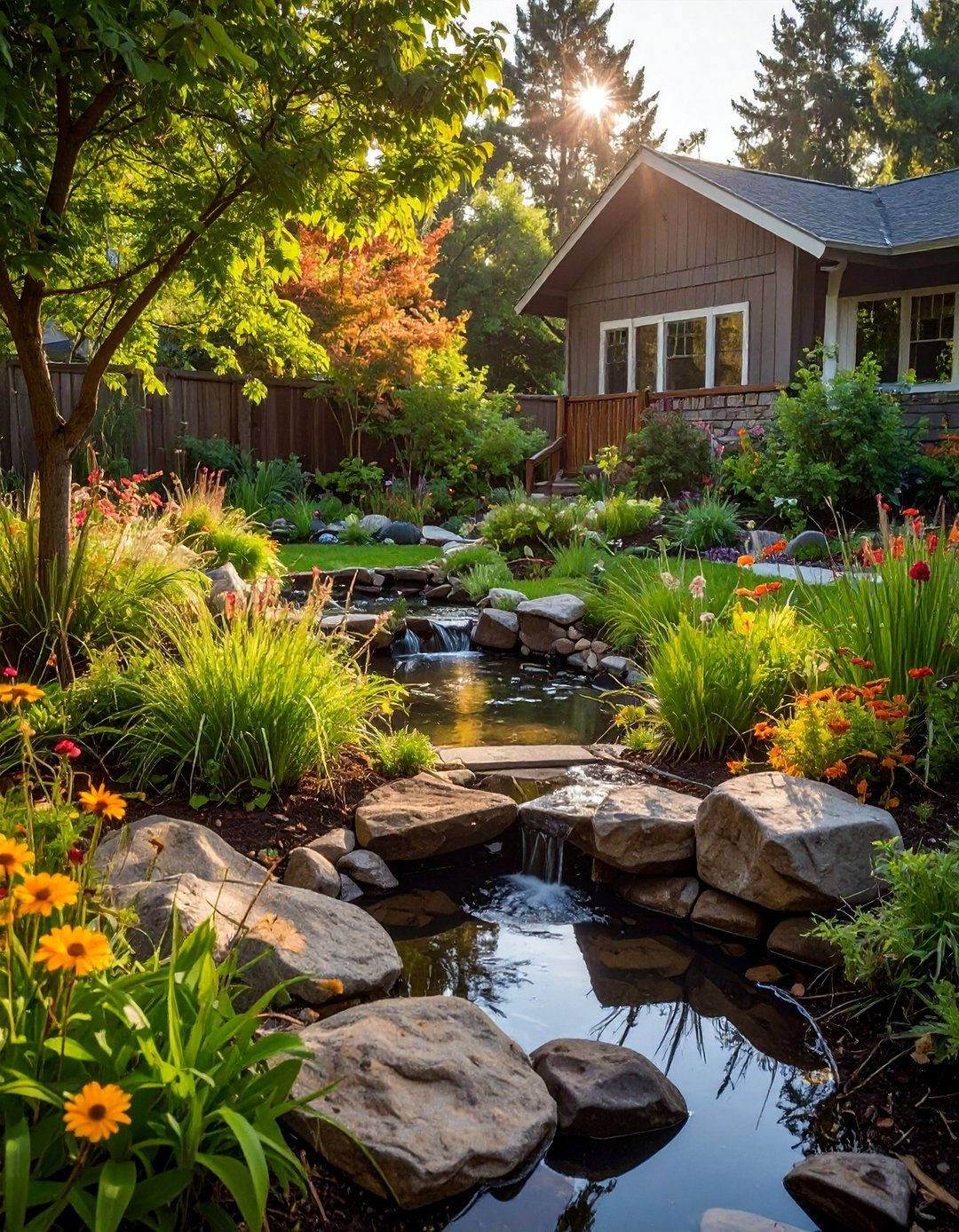
Design landscapes that specifically support local wildlife populations while incorporating rocks and mulch in ways that provide shelter, nesting sites, and food sources for beneficial species. Select native plants that provide nectar, seeds, and berries throughout seasons while rock piles and mulched areas create habitat for beneficial insects, small mammals, and ground-nesting birds. Water features integrated with stone work provide drinking and bathing opportunities while dense plantings offer protection from predators and harsh weather. The naturalistic design celebrates biodiversity while creating dynamic landscapes that change as wildlife populations establish and interact with planted environments. What magical moments might unfold when your front yard becomes a thriving ecosystem that supports countless beneficial creatures? This approach transforms private landscapes into valuable habitat that contributes to regional conservation efforts.
18. Formal Symmetrical Design
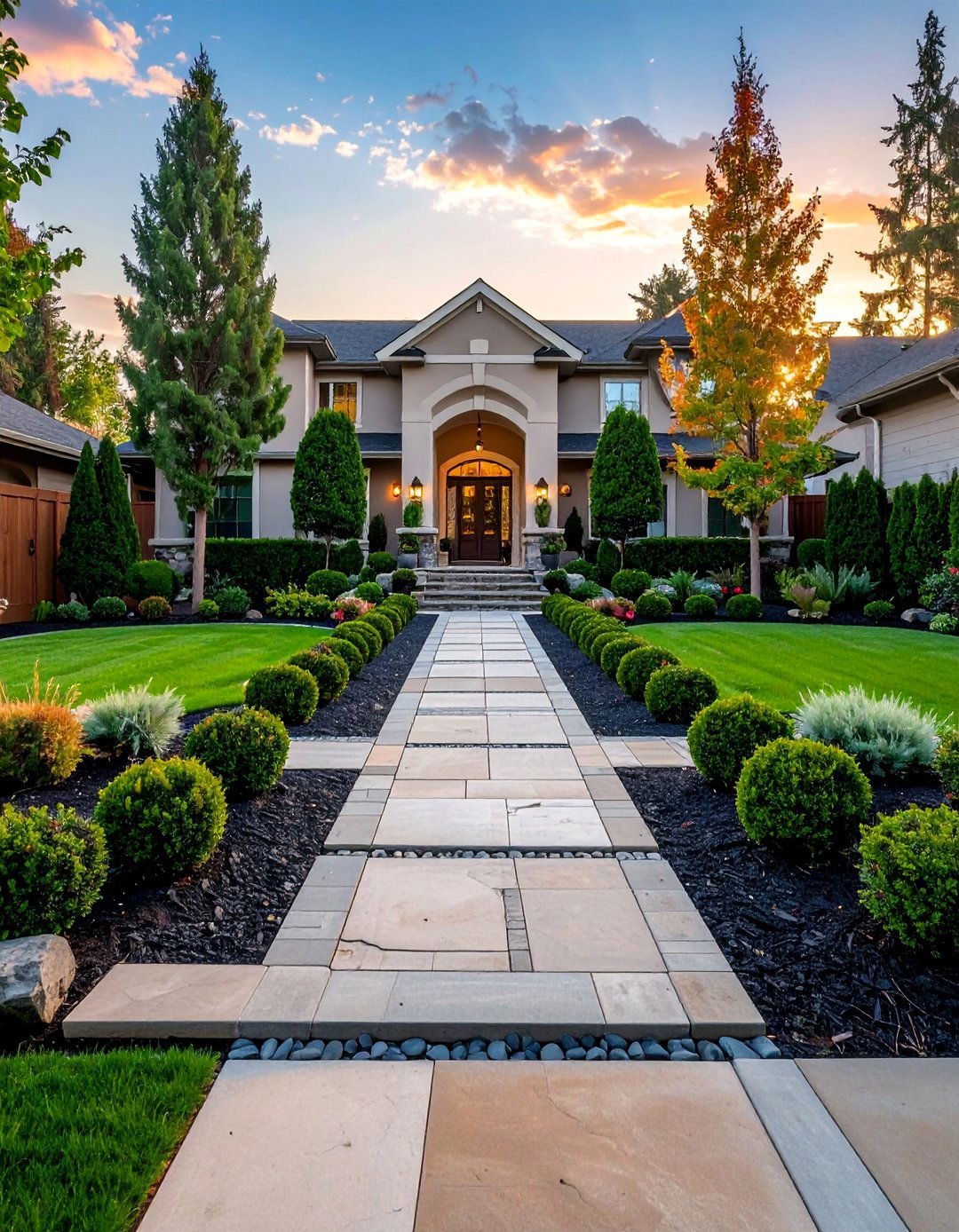
Establish elegant structured landscapes that emphasize balance, proportion, and classical design principles while incorporating contemporary materials and sustainable practices. Create mirror-image planting beds separated by central walkways, using matched plantings and identical hardscape elements to achieve formal symmetry throughout the design. Decorative stones provide structure and definition while carefully selected mulch materials enhance the refined aesthetic without compromising plant health. The formal approach requires precise maintenance but creates impressive curb appeal that conveys sophistication and attention to detail. How might a perfectly balanced landscape reflect and enhance your home's architectural character? This design style demonstrates that sustainable landscaping practices can be incorporated into traditional formal garden styles, creating timeless beauty with modern environmental consciousness.
19. Container Garden Collections
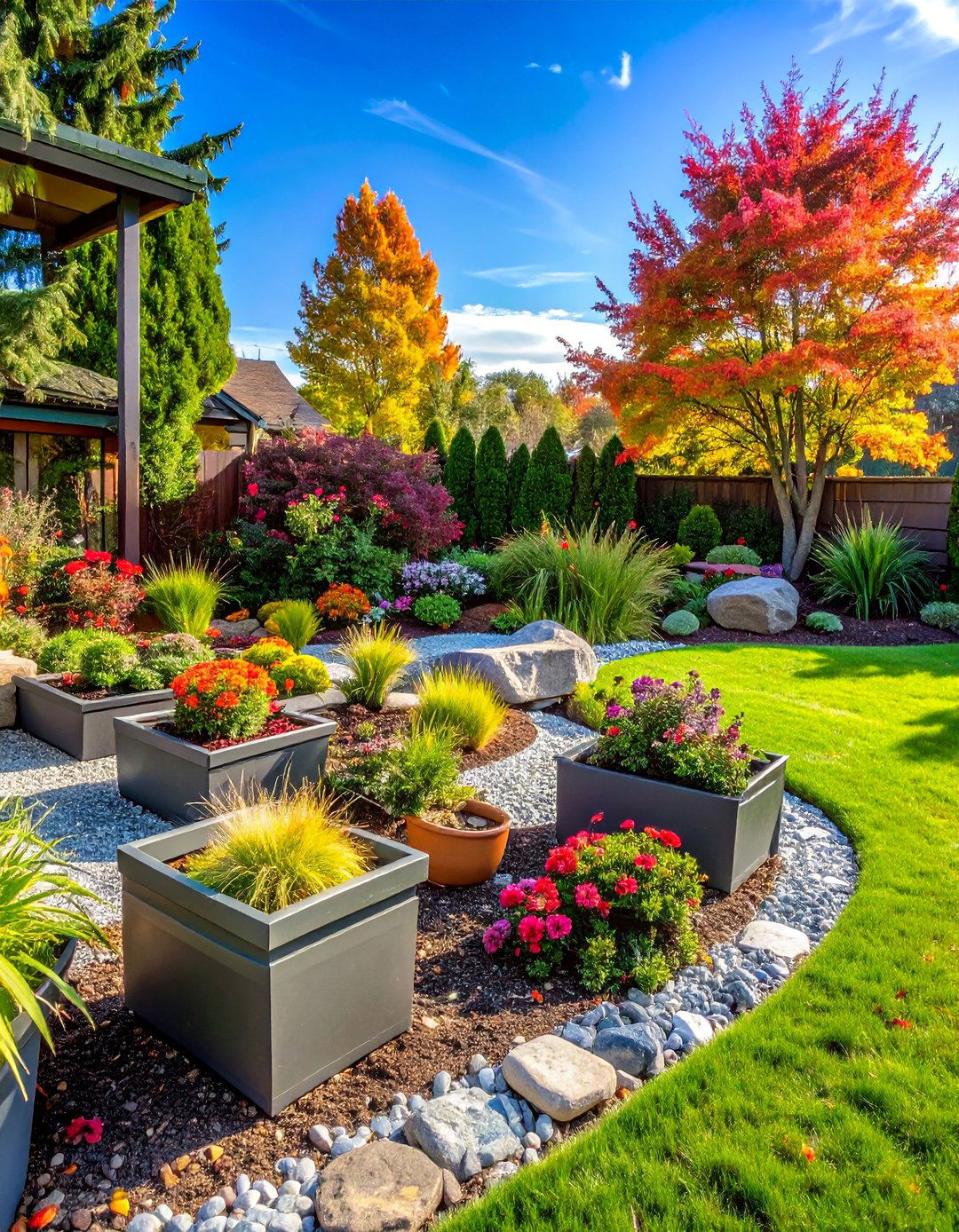
Maximize design flexibility through portable planting systems that allow seasonal rearrangement while incorporating permanent rock features and mulched ground plane installations. Group containers of varying sizes and materials to create dynamic compositions that can be reconfigured for different seasons, special events, or changing preferences. The permanent landscape elements provide consistent structure while container plantings offer opportunities for experimentation with new species and design ideas. Stone pathways and mulched areas create attractive settings for container displays while providing practical surfaces for maintenance activities. What creative possibilities open up when your landscape elements can be rearranged like outdoor furniture? This approach allows for continuous design evolution while maintaining core landscape structure and reducing long-term installation costs.
20. Slope Stabilization Garden
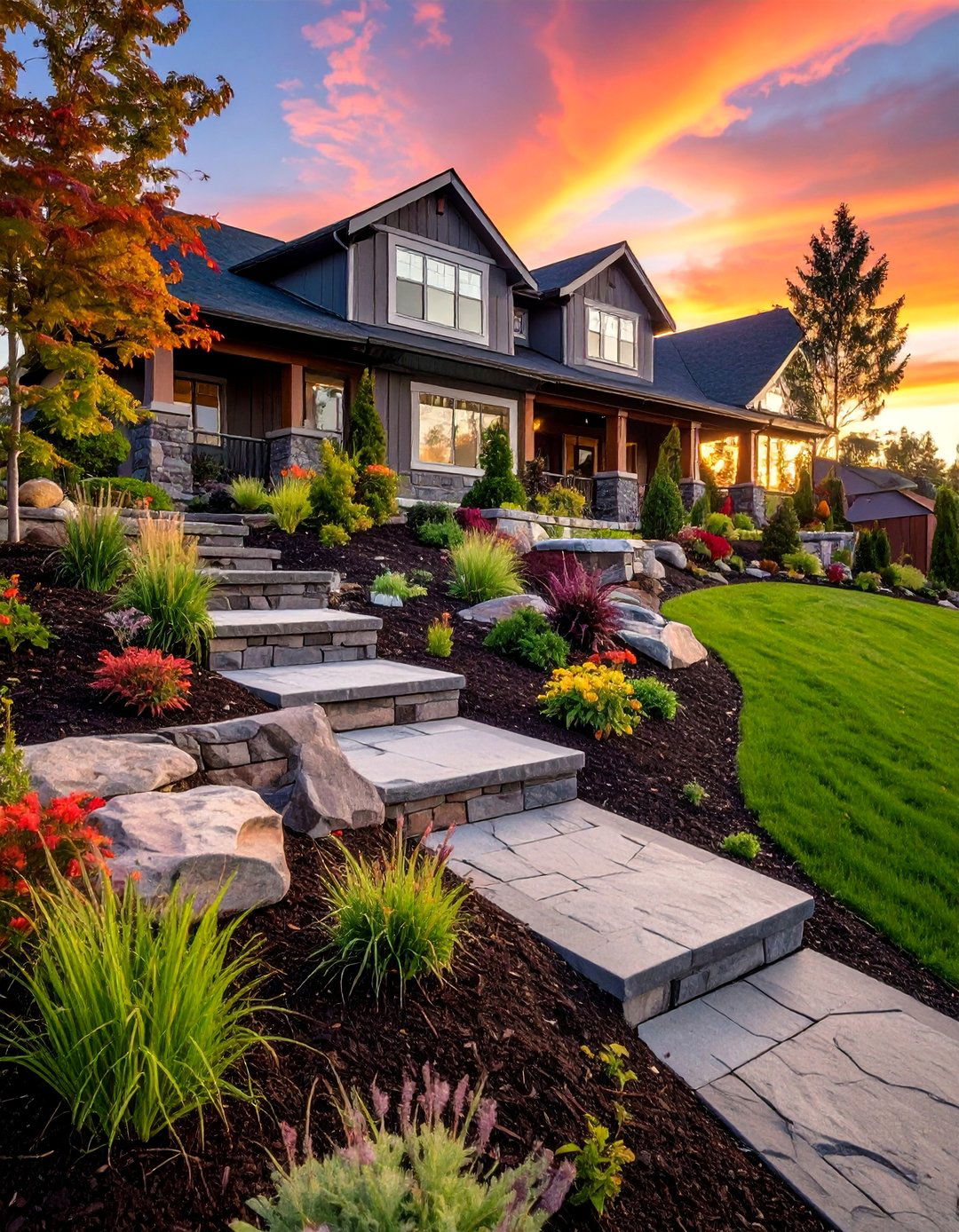
Address challenging terrain through terraced gardens that prevent erosion while creating attractive multi-level planting opportunities using retaining walls, rock features, and strategic mulching techniques. Design stepped planting areas that follow natural contours while incorporating drainage systems that manage water flow during heavy precipitation events. The terraced structure creates distinct planting zones with different microclimates, allowing for diverse plant communities within a single landscape composition. Stone retaining walls provide permanent structure while mulched planting areas conserve moisture and prevent soil movement between terraces. How can steep or unstable slopes become assets rather than landscape challenges? This engineering approach transforms problematic topography into unique garden features that provide visual interest while solving practical drainage and erosion issues.
21. Pollinator Support Garden

Establish abundant nectar and pollen sources that support declining bee and butterfly populations while creating colorful displays that provide visual interest throughout growing seasons. Select plants with overlapping bloom times to ensure continuous food sources from early spring through late fall, incorporating native species that have co-evolved with local pollinator populations. Rock features provide basking sites for butterflies while mulched areas support ground-nesting bee species that require loose soil for reproduction. The diverse plant community creates habitat complexity that supports various pollinator species with different feeding and nesting requirements. What role might your front yard play in supporting essential pollinator populations that ensure food security for entire communities? This conservation-minded approach creates beautiful landscapes while contributing to critical ecosystem services.
22. Minimalist Modern Design

Achieve sophisticated simplicity through careful selection of few materials and plants that create maximum visual impact with minimal complexity and maintenance requirements. Use geometric arrangements of rocks, limited plant palettes, and neutral-colored mulches to create clean compositions that emphasize form, texture, and negative space. The restrained approach requires excellent execution of basic elements rather than complex arrangements, creating landscapes that complement contemporary architecture without competing for attention. Strategic lighting enhances the minimalist aesthetic during evening hours while revealing subtle textures and shadows that add depth to simple compositions. How can less truly become more when every element serves both functional and aesthetic purposes? This design philosophy demonstrates that sustainability and beauty can be achieved through thoughtful restraint rather than elaborate complexity.
23. Fragrant Garden Experience

Create sensory landscapes that appeal to smell as well as sight through strategic placement of aromatic plants, herbs, and flowers that release fragrance at different times and conditions. Design pathways that bring visitors close to fragrant plantings while rock features provide thermal mass that intensifies scent release during warm periods. The layered fragrances create memorable experiences that enhance emotional connections to outdoor spaces while practical mulching systems support plant health and reduce maintenance needs. Evening-fragrant plants extend the garden's appeal into nighttime hours while morning-scented species provide pleasant starts to daily routines. What memories and emotions might be triggered by distinctive garden fragrances that greet visitors and residents throughout seasons? This approach engages multiple senses to create deeply meaningful landscape experiences that resonate long after visual memories fade.
24. Low-Water Gravel Garden
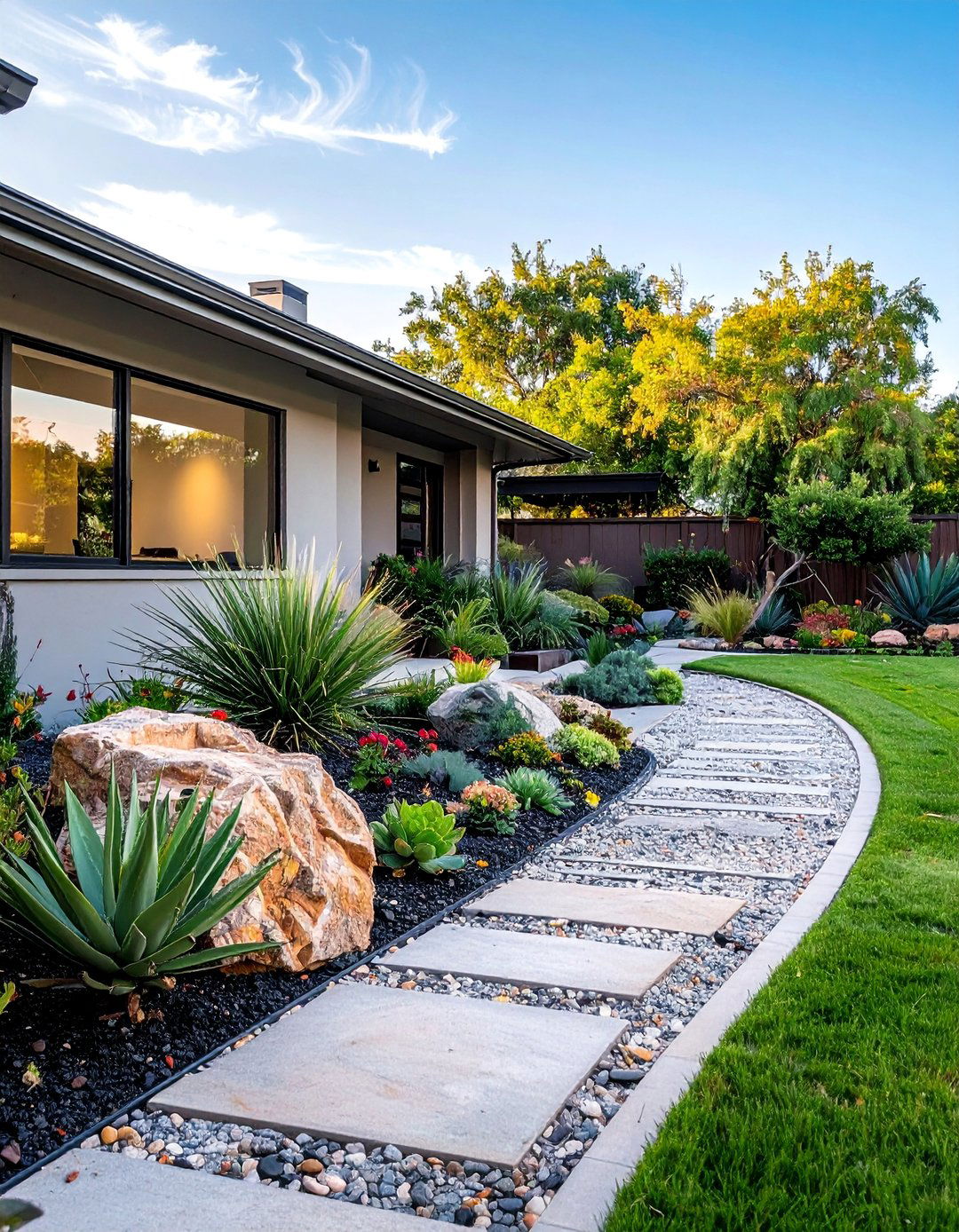
Develop ultra-efficient landscapes that thrive with minimal irrigation while providing year-round visual interest through diverse plant textures and strategic rock placement. Use gravel mulch as the primary ground cover with carefully selected drought-tolerant plants that emerge from the mineral matrix like natural outcroppings. The well-draining environment suits mediterranean plants, native species, and adapted perennials that require excellent drainage for optimal performance. Larger rocks create focal points and microclimates while providing thermal mass that moderates soil temperatures around plant roots. How much water and maintenance time could be saved while actually improving plant performance through appropriate material selection? This water-wise approach creates sophisticated landscapes that thrive in challenging conditions while reducing resource consumption and environmental impact.
25. Seasonal Bulb Display
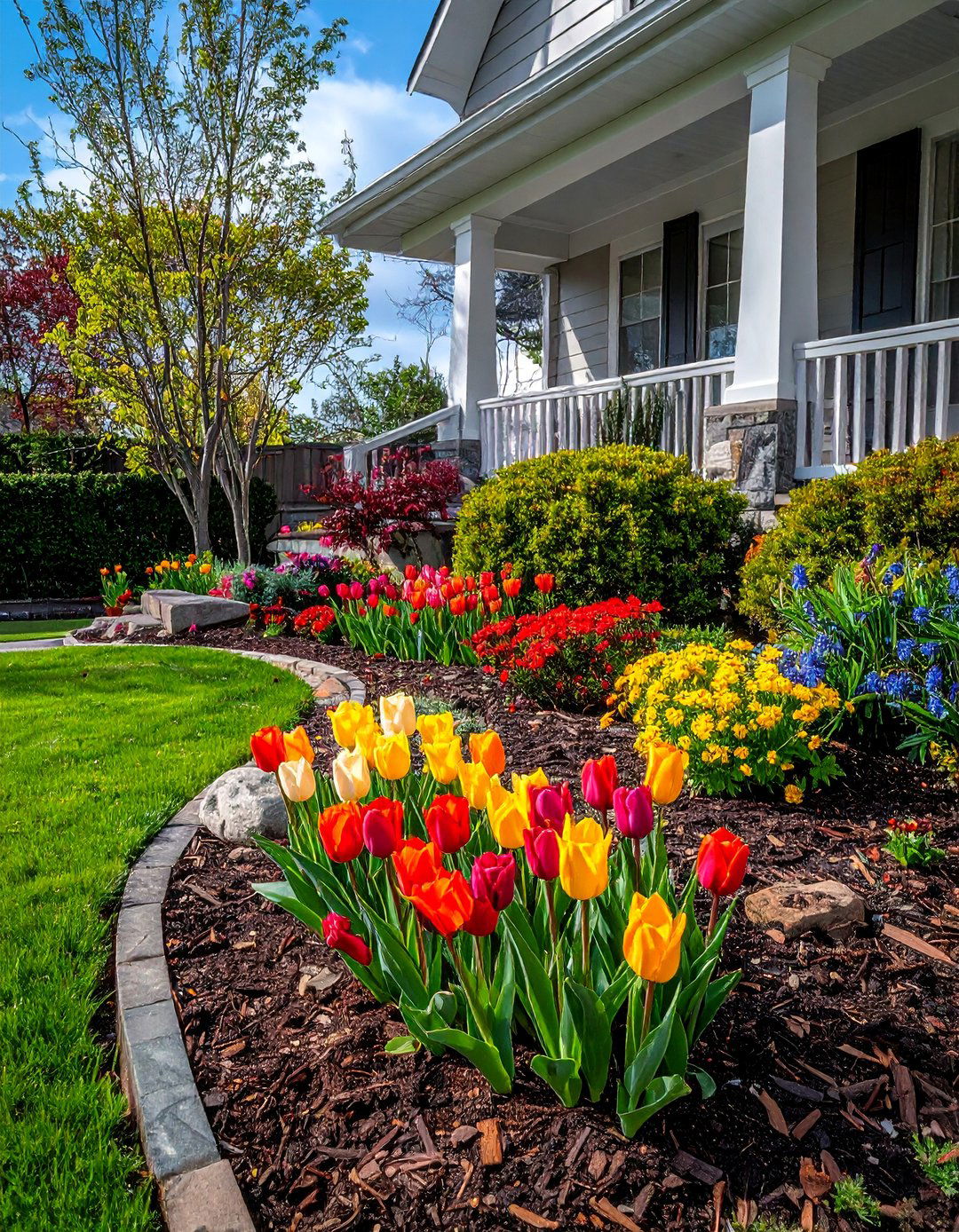
Plan spectacular spring and fall displays through strategic bulb plantings that emerge through mulched areas and complement permanent rock features throughout the landscape. Layer different bulb species with varying bloom times to extend the flowering season from early spring through late fall, creating waves of color that transform the landscape character. The rock elements provide structure during dormant periods while mulch protects bulbs from temperature extremes and provides nutrients as organic materials decompose. Naturalized planting patterns create informal displays that integrate seamlessly with perennial plantings and existing landscape features. What joy might spring's first flowers bring after long winter months, especially when they emerge as surprises throughout your front yard? This approach creates anticipation and celebration of seasonal changes while providing spectacular displays with minimal annual maintenance requirements.
26. Smart Irrigation Integration
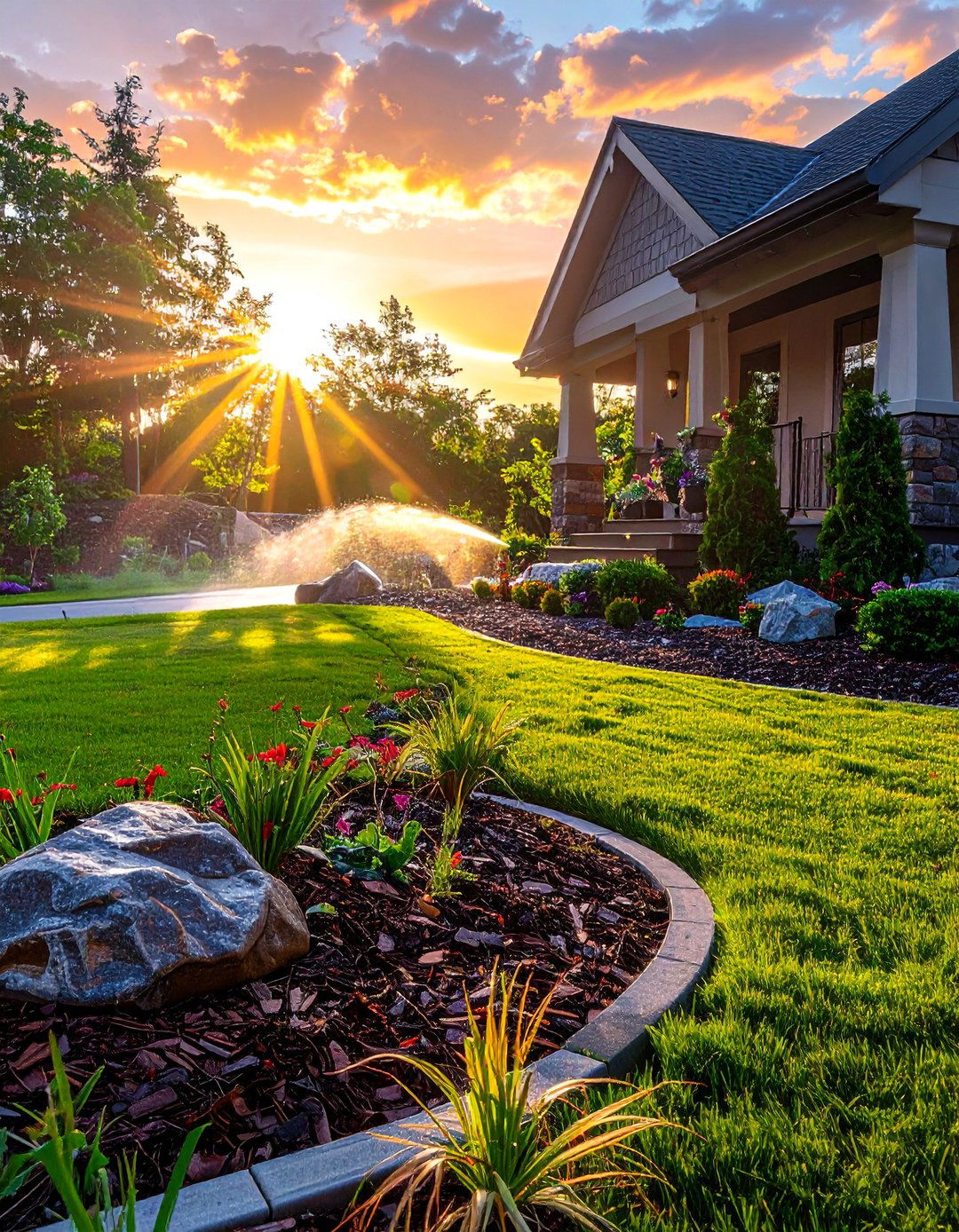
Incorporate water-efficient technology that monitors soil moisture and weather conditions while maintaining attractive landscape compositions that hide utilitarian infrastructure within naturalistic designs. Install drip irrigation systems beneath mulch layers and around rock features, using smart controllers that adjust watering schedules based on actual plant needs rather than arbitrary timers. The technology integration reduces water waste while ensuring optimal plant health during varying weather conditions and seasonal changes. Moisture sensors placed strategically throughout planted areas provide data that prevents both drought stress and overwatering problems. How much water, time, and plant loss could be prevented through intelligent irrigation systems that respond to actual conditions? This approach combines cutting-edge technology with traditional landscape materials to create efficient systems that support plant health while conserving precious water resources.
27. Entry Garden Welcome

Design impressive entrance landscapes that create positive first impressions while incorporating practical elements like walkways, lighting, and address displays within cohesive plant and rock compositions. Frame doorways and walkways with structured plantings that guide visitors while creating obvious circulation patterns through attractive hardscape and landscape elements. The entrance design should reflect home architecture while providing year-round appeal through evergreen backbone plants and seasonal accent features. Stone pathways provide safe footing while decorative rocks and mulched plantings create inviting atmosphere that welcomes visitors and residents alike. What emotions and expectations do you want to create for everyone who approaches your front door? This approach recognizes that landscape design significantly influences how people feel about and interact with residential spaces.
28. Privacy Screen Garden

Establish attractive barriers that provide visual separation from streets and neighbors while incorporating diverse plants and hardscape elements that create interesting outdoor rooms rather than simple barriers. Layer plants with different heights and densities to create effective screening while maintaining air circulation and avoiding fortress-like appearances that can seem unwelcoming. Rock features and mulched areas provide structure and planting variety that creates habitat and visual interest within the privacy screen design. The screening elements should integrate with overall landscape composition rather than appearing as afterthoughts or purely functional additions. How can privacy enhancement also contribute to landscape beauty and ecological function? This approach transforms necessary screening into attractive landscape features that serve multiple purposes while creating comfortable outdoor environments.
29. Winter Interest Garden

Plan landscapes that provide visual appeal during dormant seasons through evergreen plants, interesting bark textures, persistent seed heads, and rock features that create structure when deciduous plants are leafless. Select plants that offer winter berries, attractive branching patterns, or persistent foliage that maintains color through cold months. The rock elements become more prominent during winter, providing consistent visual anchors while organic mulch protects plant roots from freeze-thaw cycles. Strategic lighting can highlight winter features and extend usability of outdoor spaces during shorter daylight hours. What prevents most landscapes from being attractive during winter months, and how might thoughtful plant selection change seasonal perceptions? This approach ensures year-round landscape value while celebrating each season's unique characteristics and natural beauty.
30. Therapeutic Garden Design
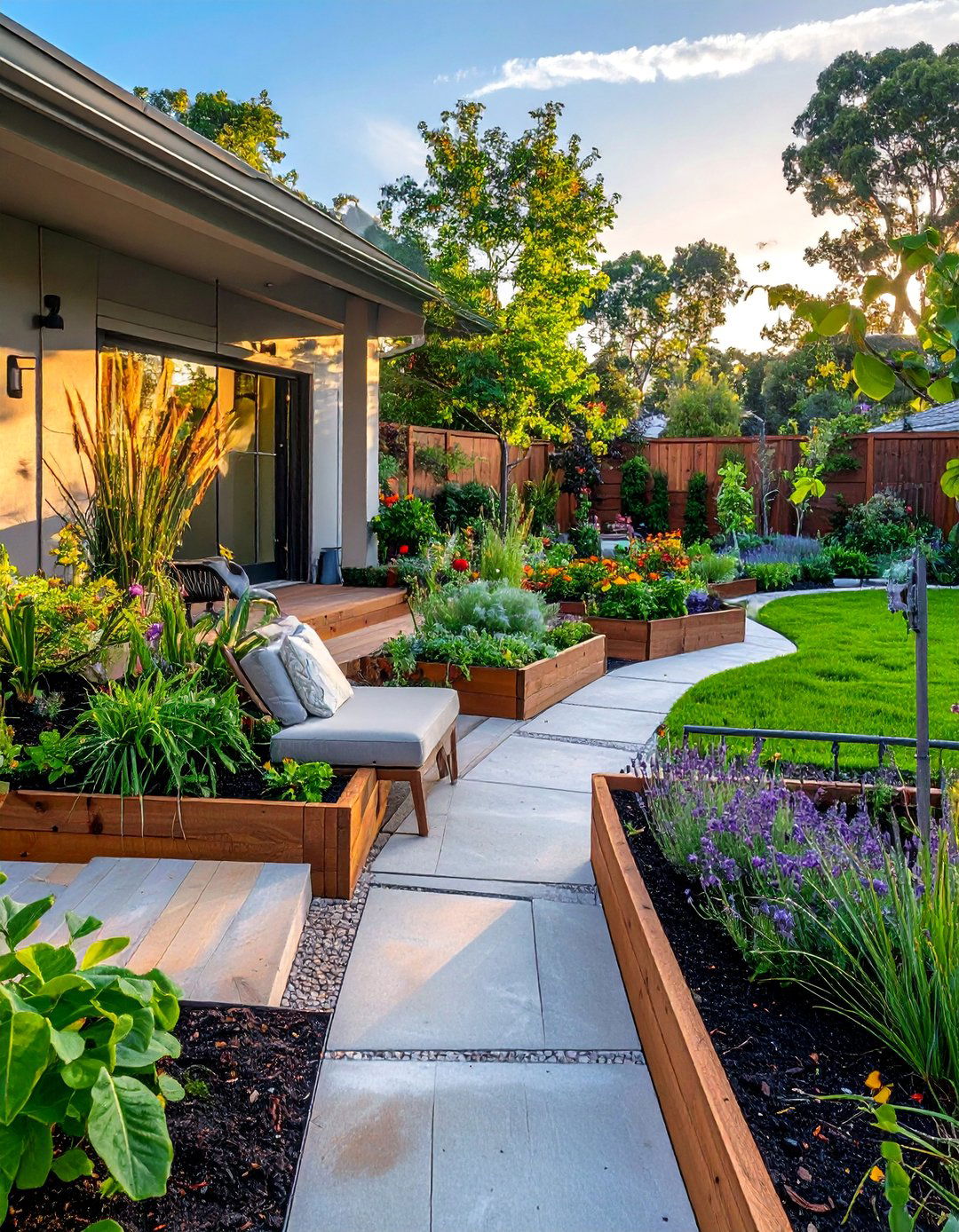
Create outdoor spaces that specifically support physical and mental wellness through accessible pathways, sensory plantings, and comfortable seating areas that encourage regular outdoor interaction and gentle activity. Design raised beds and container gardens that accommodate different mobility levels while providing opportunities for therapeutic gardening activities that support rehabilitation and stress reduction. The combination of soft plantings and hard materials creates varied textures and experiences that stimulate different senses while providing cognitive engagement through seasonal changes. Comfortable seating placed strategically throughout the landscape encourages longer outdoor stays that provide documented health benefits. How might daily access to thoughtfully designed outdoor spaces contribute to improved physical and mental wellness for residents and visitors? This approach recognizes landscape design's potential to support human health while creating beautiful outdoor environments.
Conclusion:
The combination of rocks and mulch in front yard landscaping offers unlimited creative possibilities that serve both aesthetic and practical purposes while adapting to diverse regional conditions and personal preferences. These versatile materials provide sustainable solutions for modern homeowners seeking beautiful landscapes that require minimal maintenance while supporting environmental goals. From drought-tolerant xeriscapes to colorful cottage gardens, the integration of rocks and mulch creates outdoor spaces that thrive in challenging conditions while enhancing property values and neighborhood character. Whether addressing specific site challenges like slopes or poor drainage, or simply wanting to reduce weekend maintenance tasks, these materials offer proven solutions that improve over time. The key to successful implementation lies in understanding your local climate, soil conditions, and lifestyle requirements while selecting appropriate combinations that reflect personal style and complement home architecture throughout changing seasons.


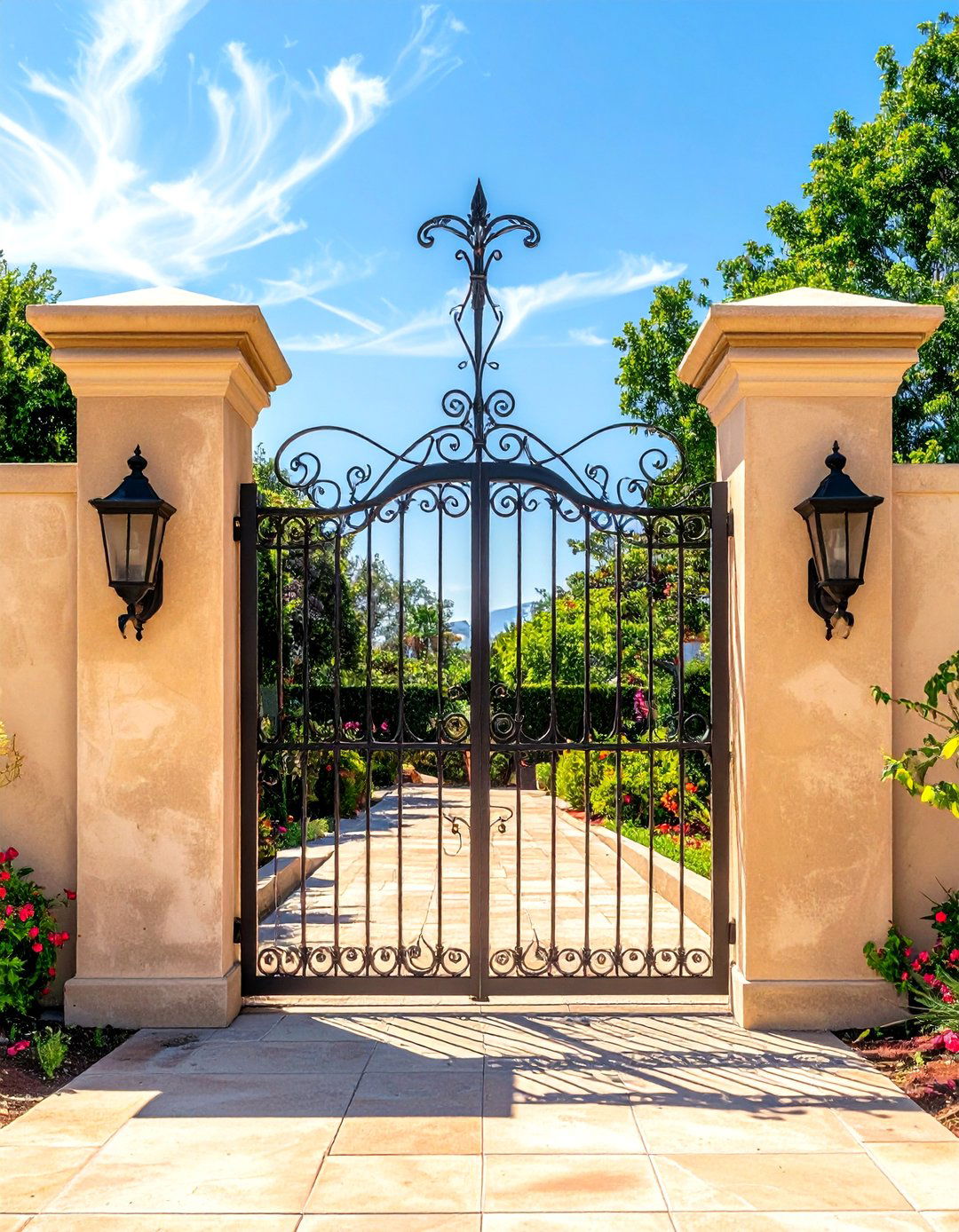
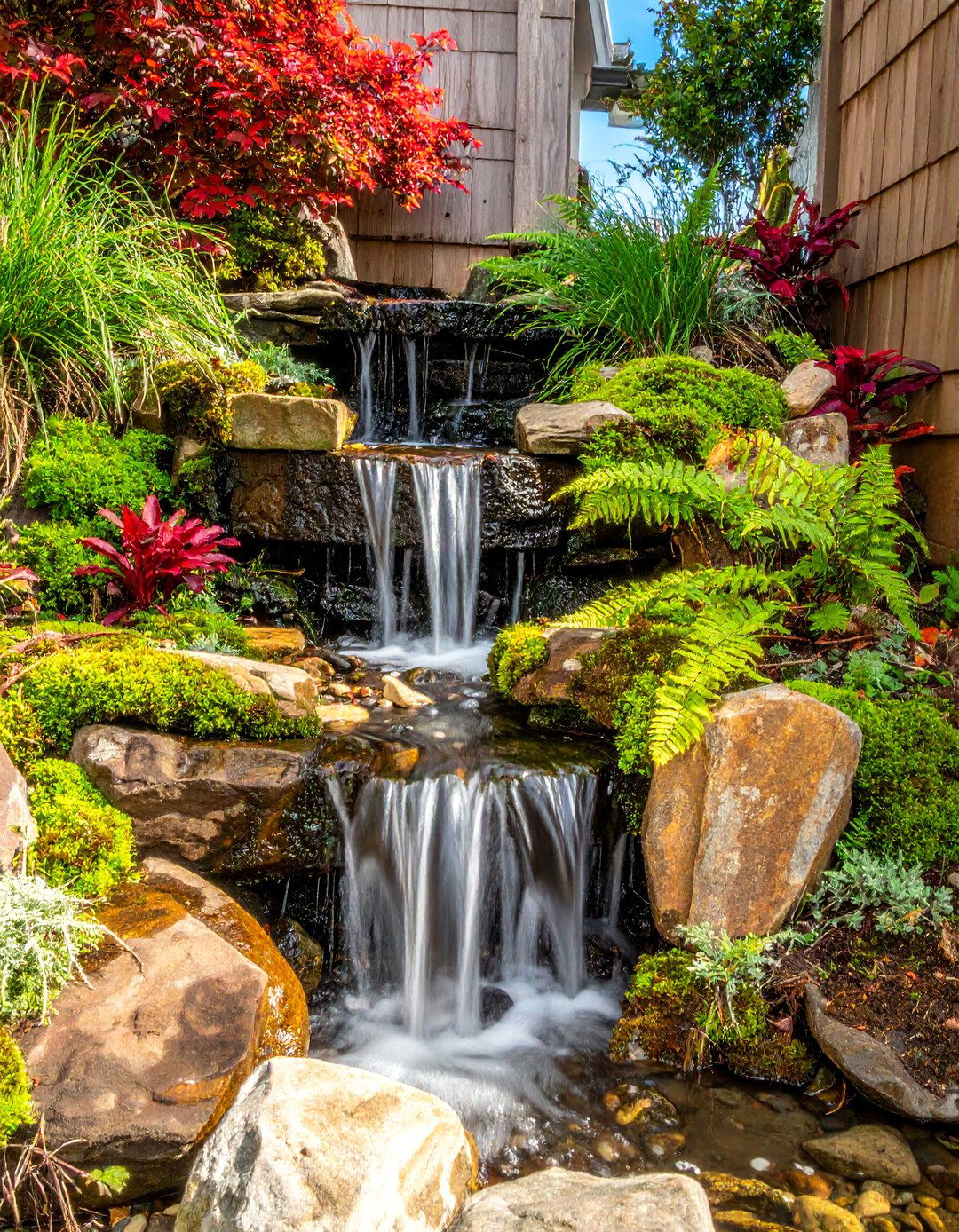
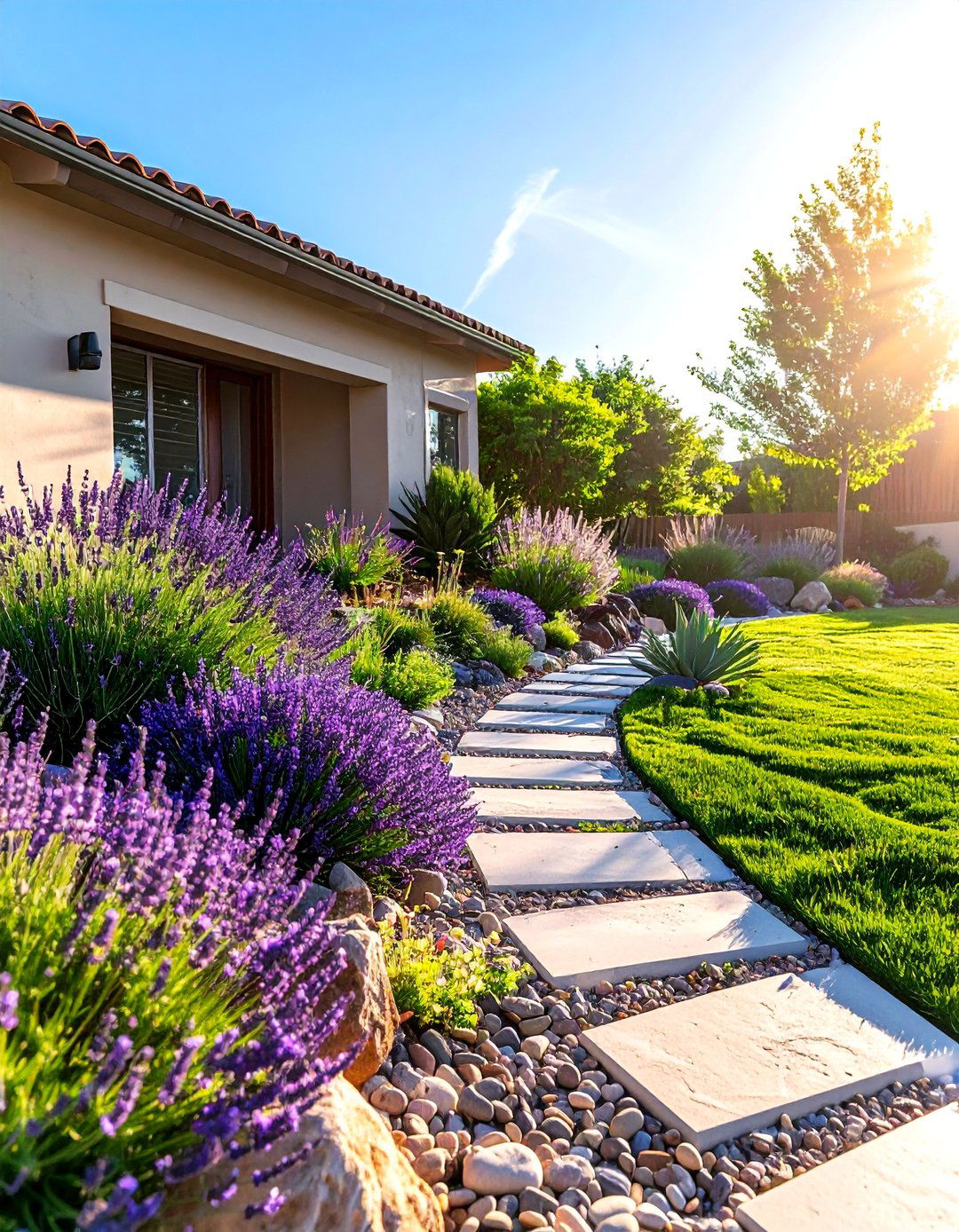
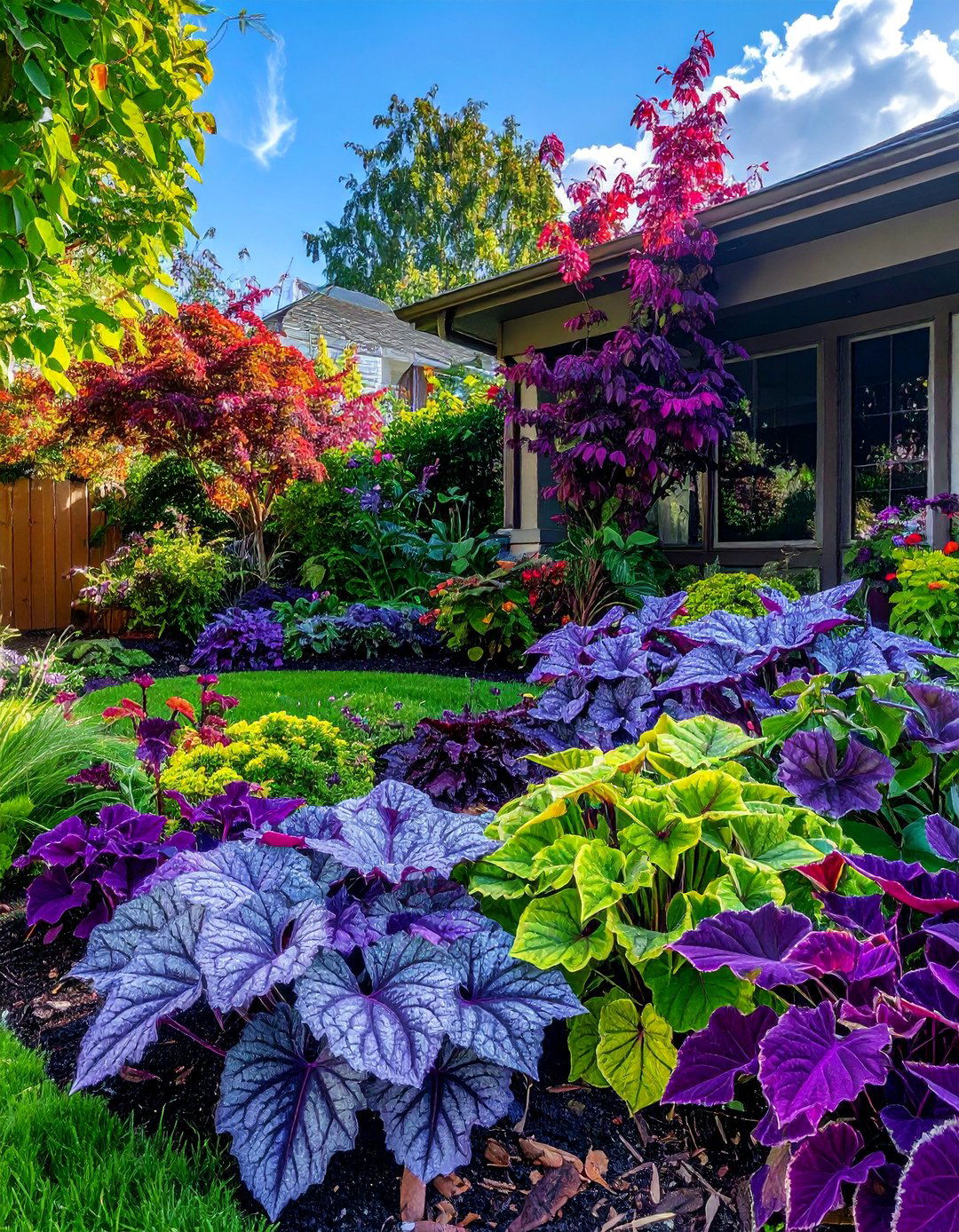

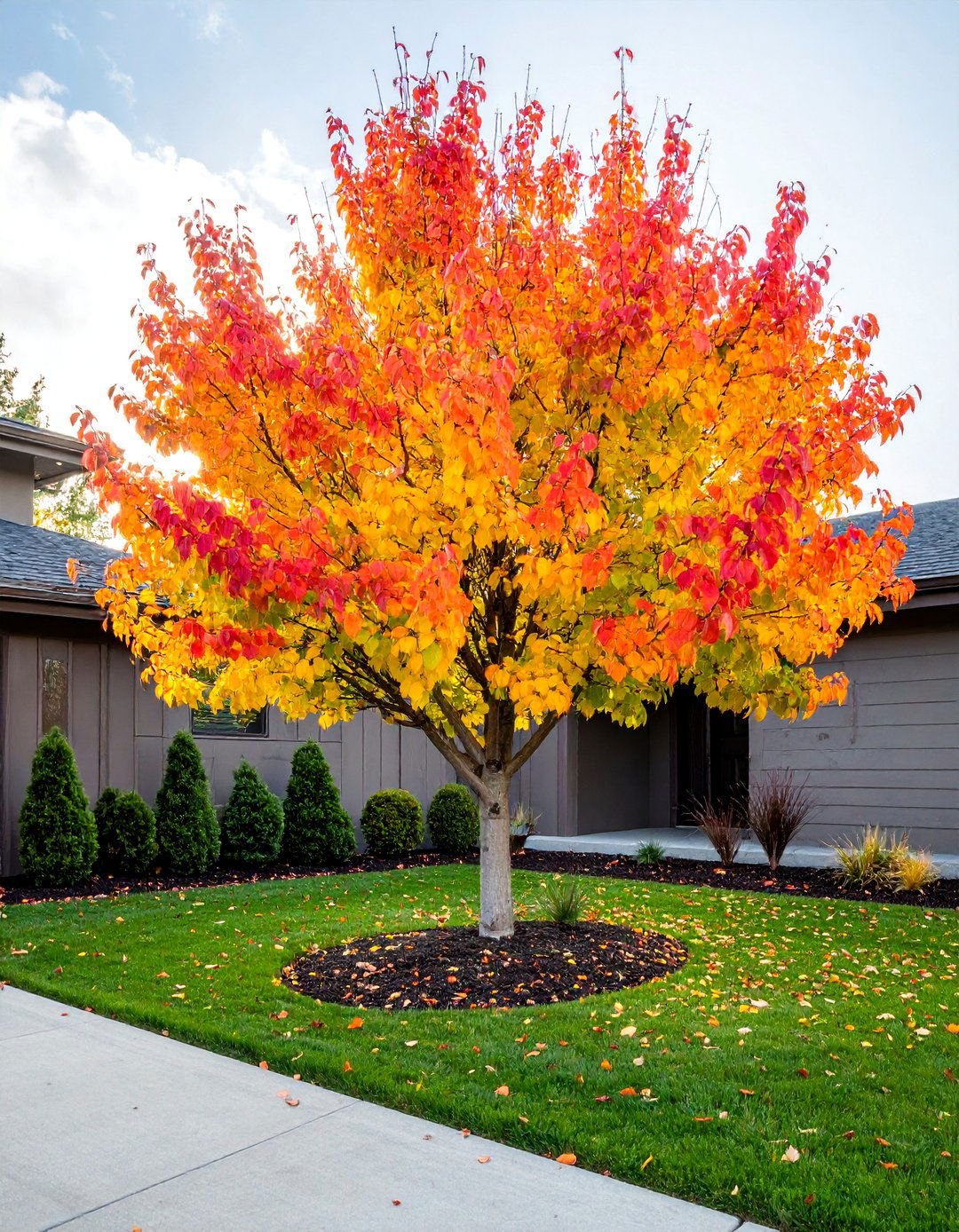
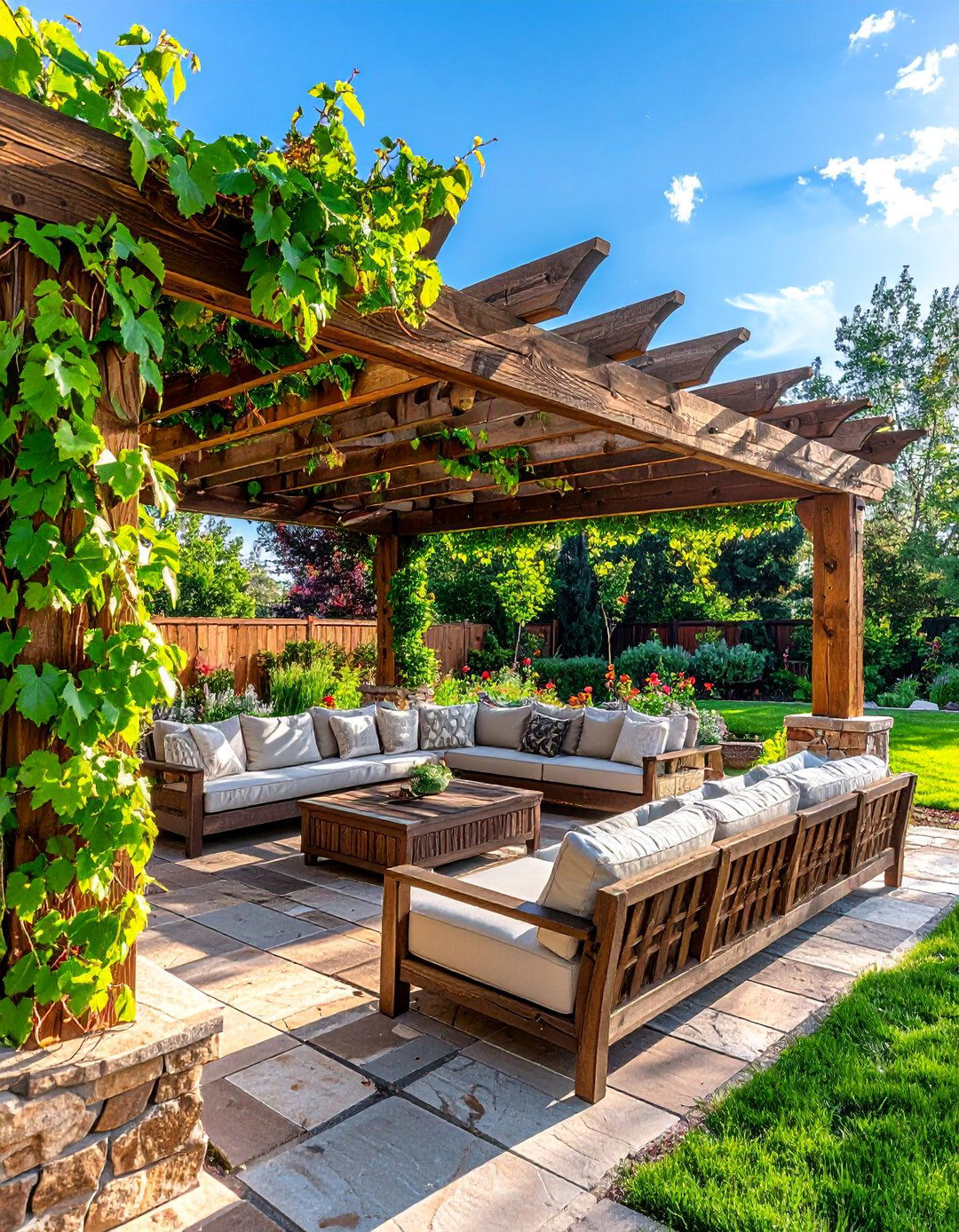
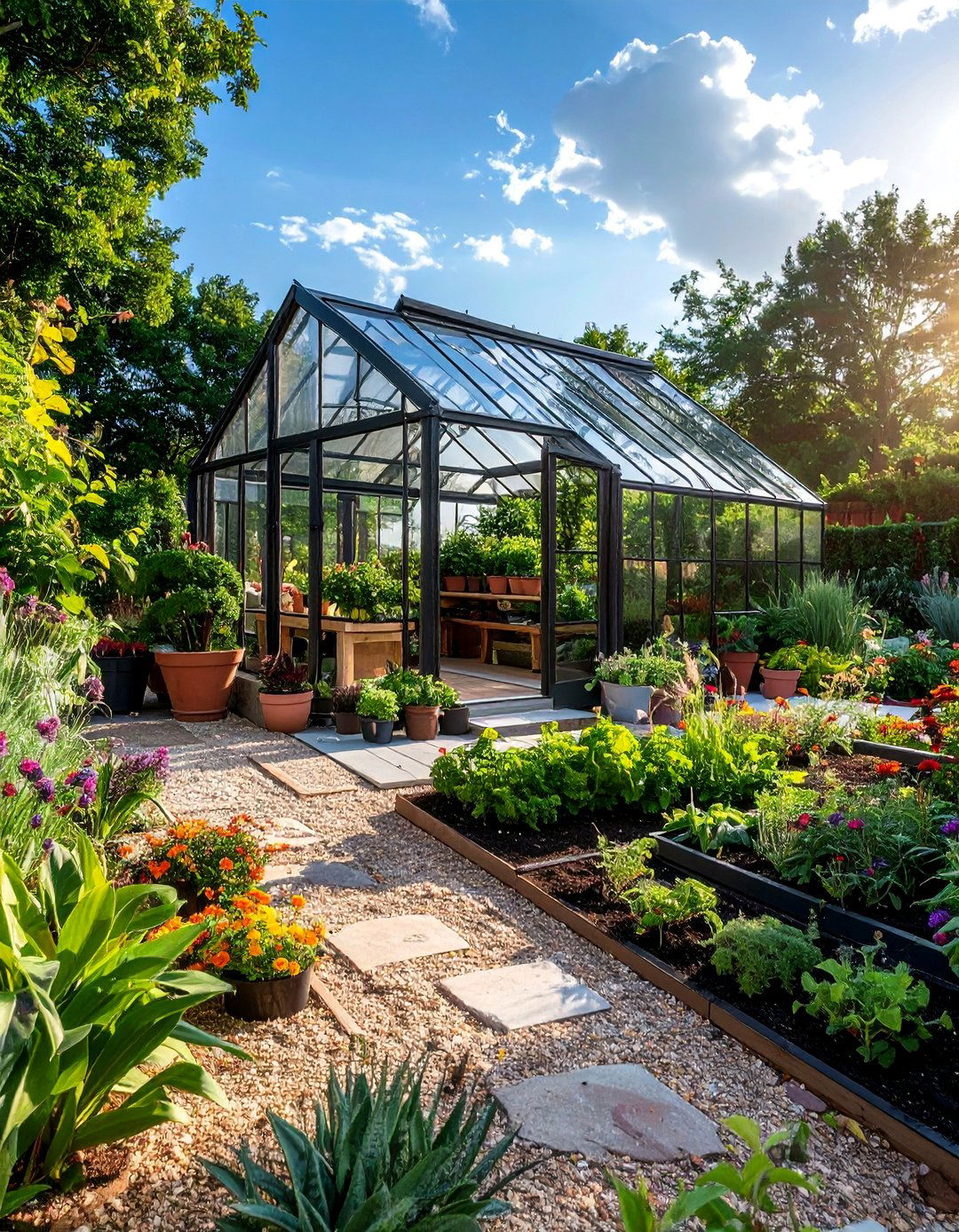
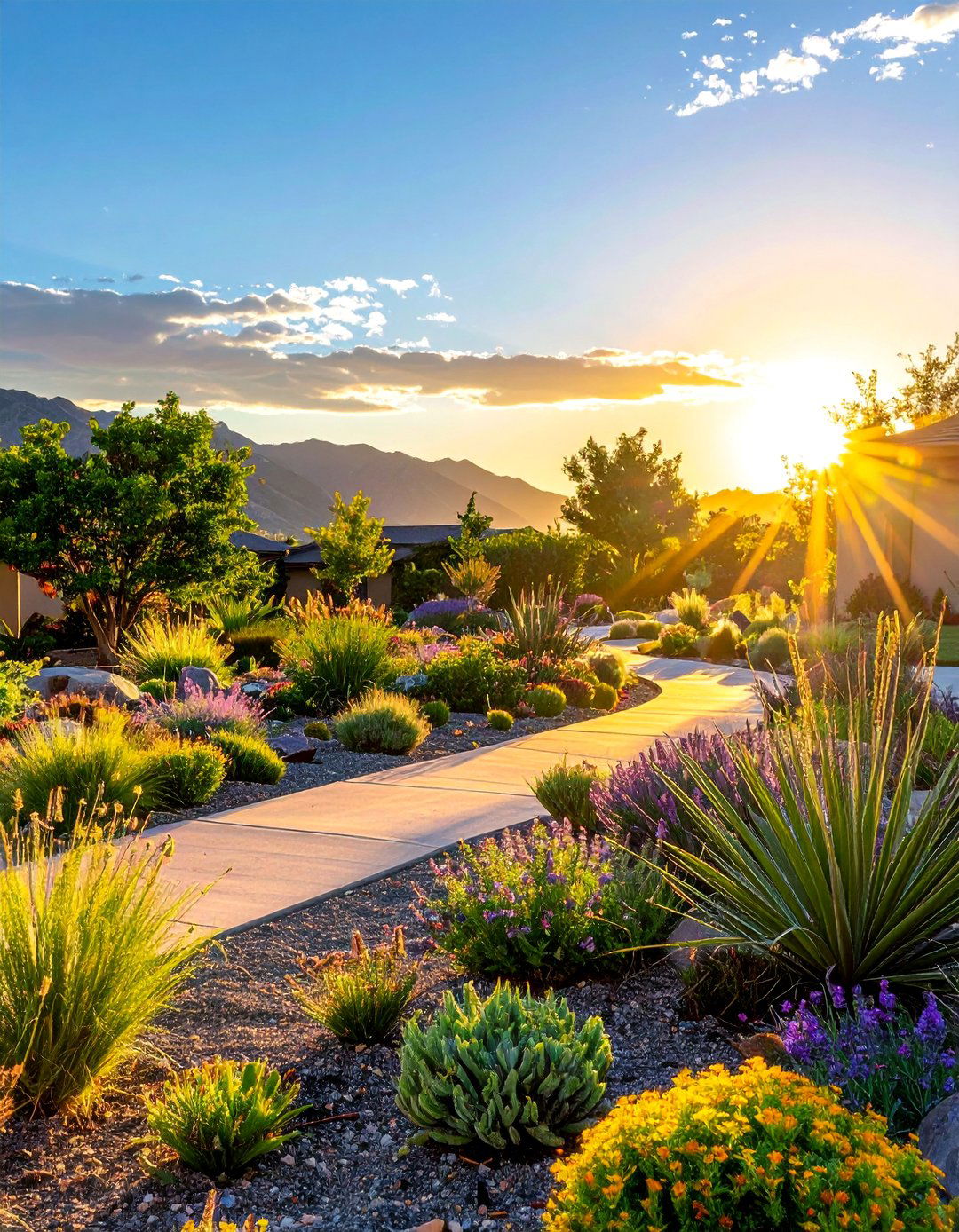


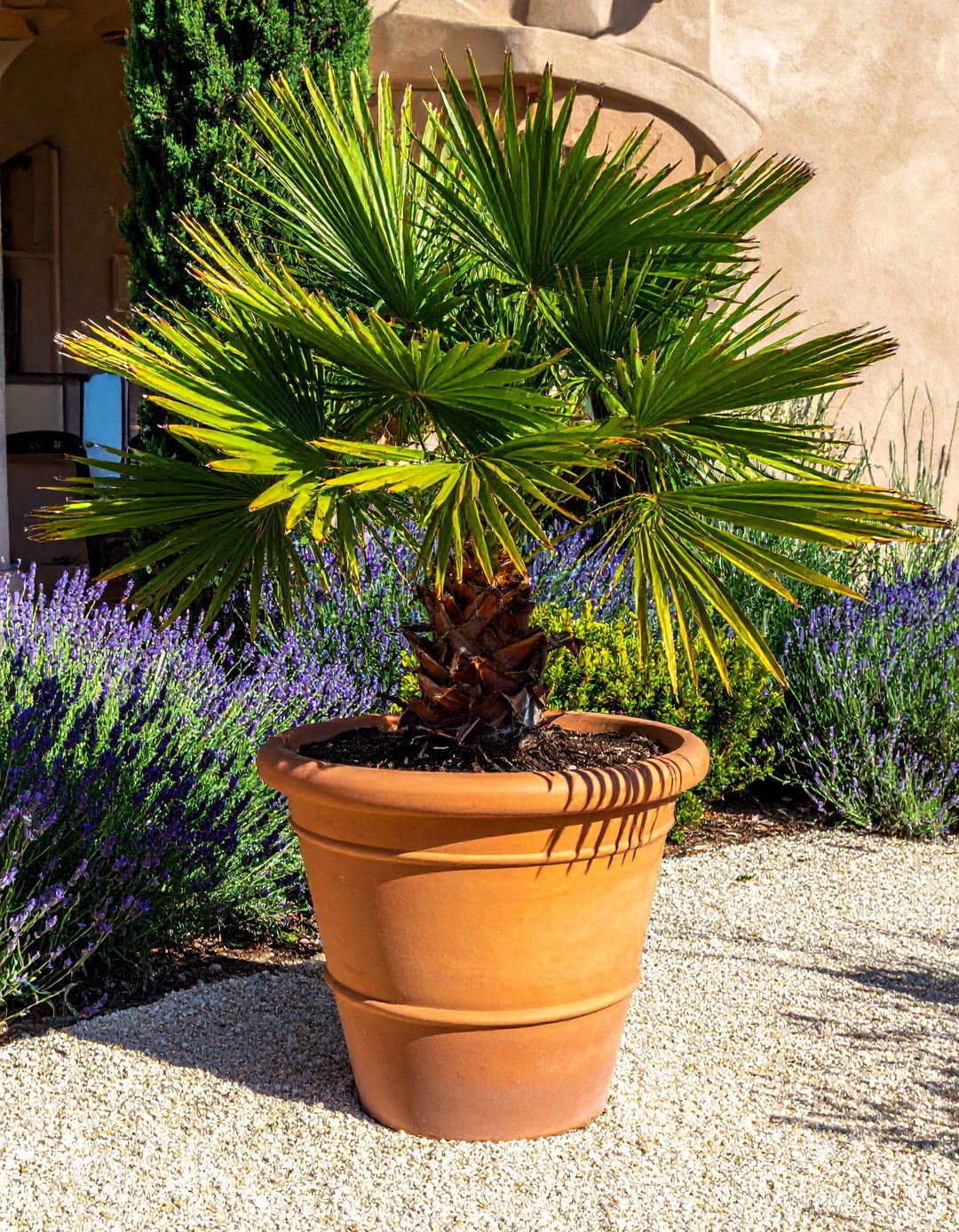

Leave a Reply